
Ngô Kỷ tại Tượng Đài Chiến Sĩ Việt Mỹ, Thủ đô tỵ
nạn tinh thần Little Saigon, Westminster, California
TƯỞNG NIỆM QUỐC HẬN 30 THÁNG
4
Little Saigon ngày 11 tháng 4 năm
2015
Kính thưa Quý Đồng
Hương
30 tháng 4 năm 1975, ngày định mệnh
đã đưa dân tộc Việt Nam rẽ qua một khúc quanh lịch sử bi thảm nhất. Là người tỵ
nạn cộng sản, chúng ta xót xa cho thân phận quê hương và thao thức về những tang
thương của đất nước.
Hồi tưởng về quá khứ, chúng ta thành
tâm biết ơn và nguyện cầu cho vong linh các Chiến Sĩ Việt Nam Cộng Hòa đã vị
quốc vong thân được siêu thoát. Chúng ta vinh danh những Tướng Lãnh và hàng ngàn
Chiến Sĩ Vô Danh đã chấp nhận cái chết hào hùng không hàng phục giặc để giữ vẹn
khí tiết bất khuất của con cháu Hoàng Diệu, Nguyễn Tri Phương, Trần Bình trọng.
Chúng ta cảm phục và chia sẻ những khốn khổ, tủi nhục của hàng trăm ngàn người
Tù Nhân Chính Trị VNCH đã chịu đựng tại các lao tù khắc nghiệt cộng sản. Chúng
ta ngậm ngùi tưởng niệm những đồng bào thân yêu xấu số đã vùi thây nơi biển cả
mênh mông, hay bỏ xác nơi rừng núi hoang vu trên đường đi tìm ánh sáng tự
do.
Chúng ta cầu xin Ơn Trên đoái thương
đến 90 triệu đồng bào ruột thịt đang sống lầm than cơ cực dưới ách thống trị dã
man của cộng sản vô thần nơi quê nhà, sớm hưởng được một đời sống tự do, dân
chủ, ấm no, hạnh phúc, nhân bản và không còn cộng sản.
Nhân mùa Quốc Hận về, tôi xin phép
kính gởi đến quý vị bài dịch Những Đồng Minh Anh Hùng, tức "Heroic Allies" của
tác giả Harry F. Noyes III, một cựu chiến binh Không Quân Mỹ từng tham chiến tại
Việt Nam. Sau cuộc chiến trở về, ông theo học tại trường Đại Học Hawaii
và tốt nghiệp cao học về Nghiên Cứu Á
Châu. Nguyên bản Anh ngữ được đăng trong
tạp chí VIETNAM số tháng 8 năm 1993.
Bài viết Những Đồng Minh Anh Hùng
"Heroic Allies" của tác giả Harry F. Noyes III không lê thê, không cường điệu,
không lạc quan, không bi quan, không thiên hữu, không thiên tả, không hiếu
chiến, không phản chiến, không bảo thủ, không cấp tiến, không Quốc Gia, không
cộng sản..., mà bài này chỉ nói lên "sự thật." Nhận thấy bài viết này có giá trị
và khách quan, nên tôi xin phép chuyển ngữ để kính tặng Quý Đồng Hương, đặc biệt
kính gởi đến những người cựu Chiến Sĩ Quân Lực Việt Nam Cộng Hòa can trường và
anh dũng, mà tôi là người hậu phương lúc nào cũng cảm kích và biết ơn sự hy sinh
lớn lao của họ trong việc chiến đấu và bảo vệ cho tôi được sống còn cho tới ngày
hôm nay..
Tôi xin đính kèm theo nguyên bản Anh ngữ
"Heroic Allies" đề quý vị có thể chia sẻ cho các bạn trẻ biết về sự chiến đấu lý
tưởng và oai hùng của cha anh trong trận chiến bảo vệ lý tưởng tự do cho miền
Nam Việt Nam.
Tôi xin quý
vị bấm vào hai cái Links Youtube Audio để nghe đọc bài "Những Đồng Minh Anh
Hùng," và xem các phim, ảnh đính kèm nói về sự chiến đấu anh dũng và tuyệt vời
của các chiến sĩ Quân Lực Việt Nam Cộng Hòa.
Đặc biệt tôi có kèm theo bài viết thật giá
trị, ý nghĩa và sâu sắc "Hãy vinh danh người Lính Việt Nam Cộng Hòa" của tác giả
Nguyễn thị Thảo An, như đóa hoa hồng tri ân những Chiến Sĩ Quân Lực Việt Nam
Cộng Hòa.
http://xaydunghouston.com/TruyenNgan/667hayvinhdanhnguoilinhHVNCH.htmHãy vinh danh người lính
Trân trọng,
Ngô Kỷ
ngokycali@gmail.com
ngokycali@gmail.com
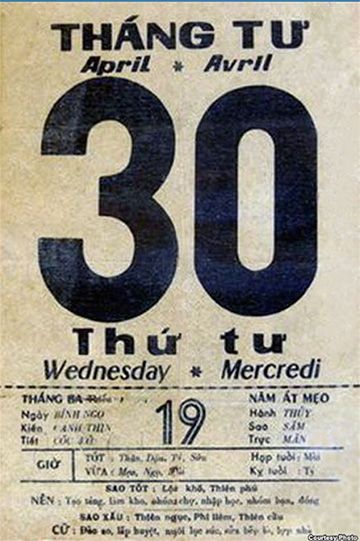

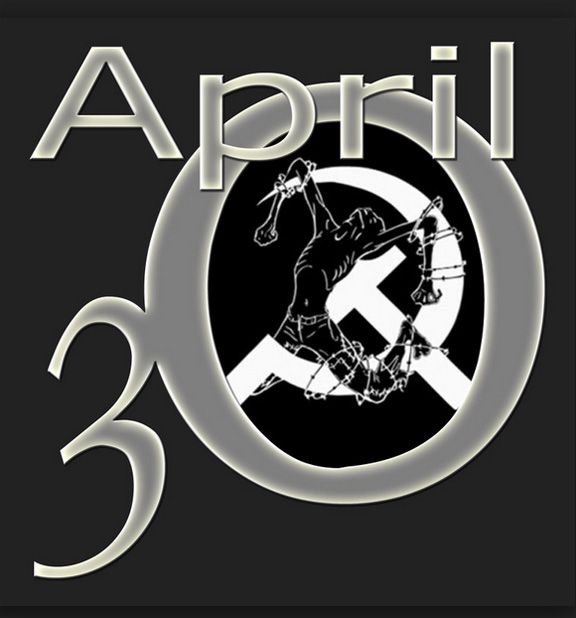
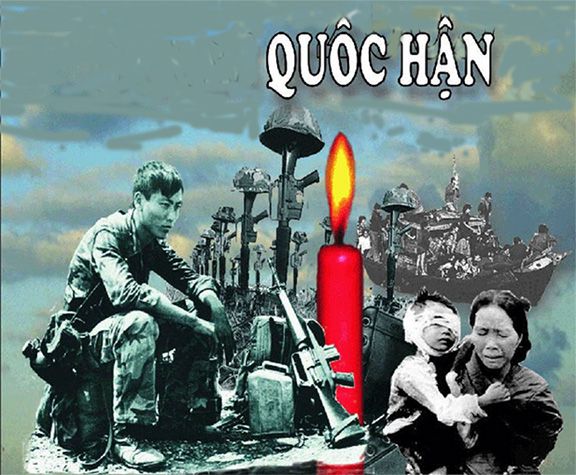
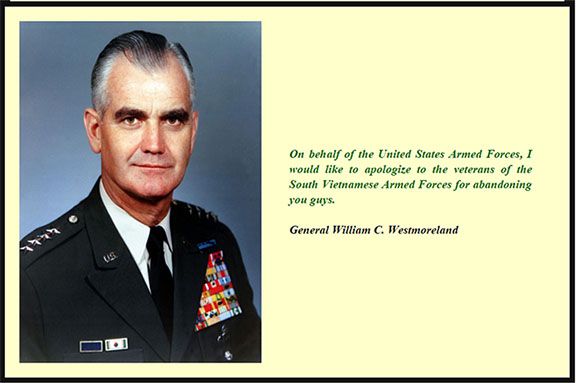
TƯỚNG
WESTMORELAND XIN LỖI CỰU QUÂN NHÂN QUÂN
LỰC VIỆT NAM CỘNG HÒA
"Thay
mặt cho quân đội Hoa Kỳ, tôi xin lỗi các bạn cựu quân nhân
của
Quân
Lực Miền Nam Việt Nam vì chúng tôi đã bỏ rơi các bạn."
(On behalf of the United States Armed Forces, I would like to
apologize
to the veterans of the South Vietnamese Armed Forces for
abandoning you guys.)


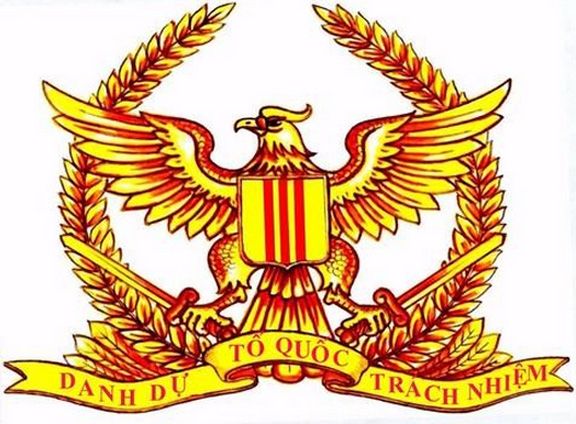







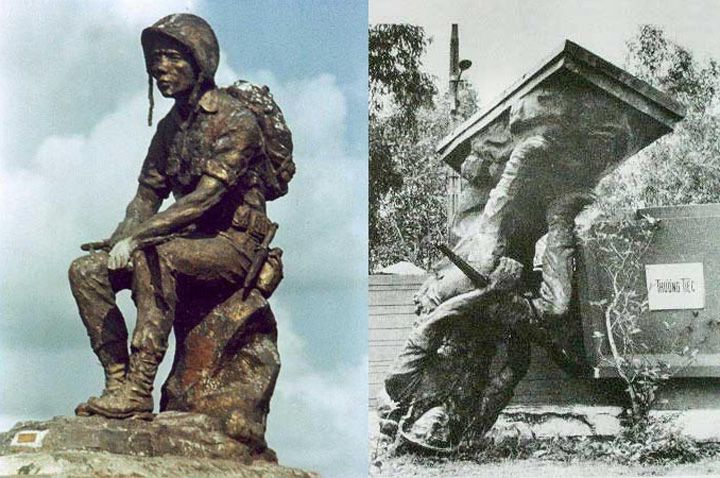
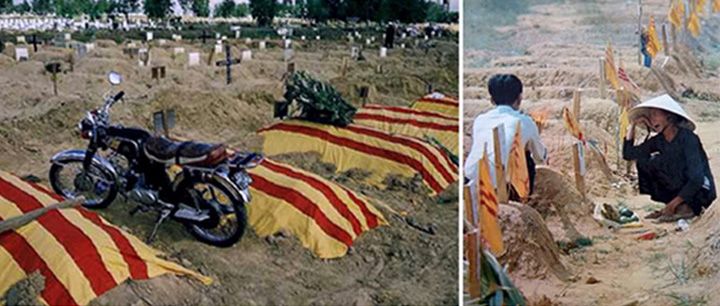


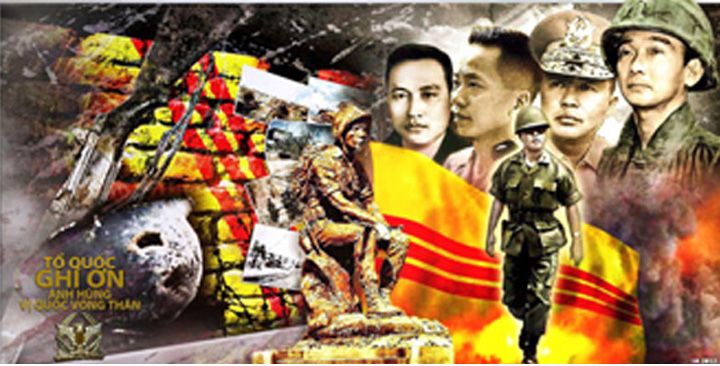
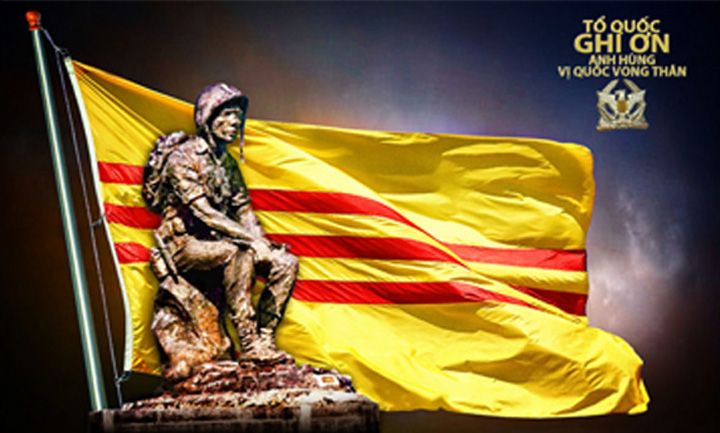
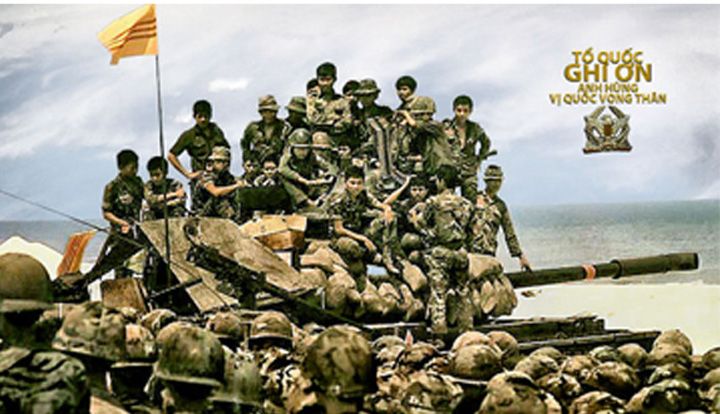
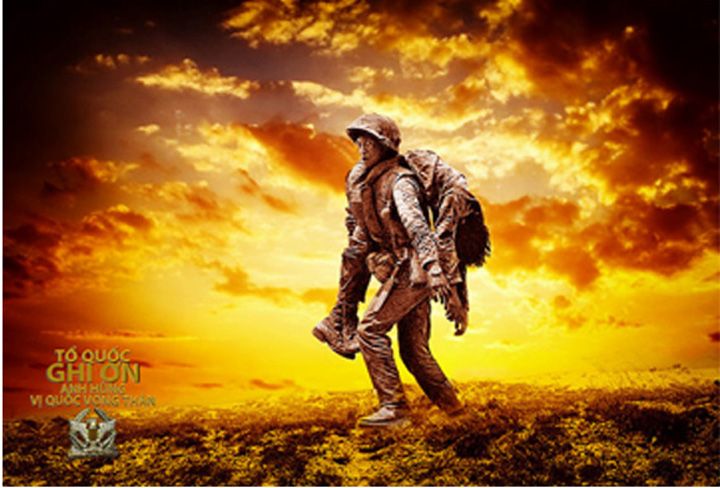
Xin
bấm Youtube ở dưới để vừa xem 300 tấm hình
thật
chọn lọc về cuộc chiến đấu anh dũng và hào hùng
của
các Chiến Sĩ Quân Lực Việt Nam Cộng Hòa,
và
vừa nghe đọc bài viết NHỮNG ĐỒNG MINH ANH HÙNG
Youtube Audio: Anh Nguyên Khôi đọc giọng
Bắc
Youtube
Audio: Anh Trần Minh đọc giọng
Nam

Những
Đồng Minh Anh Hùng
"Heroic
Allies"
của
Harry F. Noyes III
đăng trong
Nguyệt San VIETNAM, phát hành tháng 8 năm 1993
Do Ngô Kỷ chuyển ngữ để
kính tặng và tri ân sự chiến đấu dũng cảm
và tuyệt vời của những Chiến Sĩ Quân Lực Việt Nam Cộng Hòa

Họ dáng người thì nhỏ nhắn, nói
chuyện bằng những âm ngữ líu lo, thường chan nước mắm vào thức ăn và hay cầm lấy
tay nhau.
Chẳng ai ngạc nhiên lắm khi thấy
những quân nhân Mỹ gởi qua Đông Nam Á - phần lớn họ còn rất trẻ, có một kiến
thức nông cạn, được đào tạo trong một xã hội vị kỷ và hiểu rất ít về những nền
văn hóa khác - họ không cảm thông được tâm trạng của các binh sĩ Việt Nam Cộng
Hòa (VNCH).

Thật đau lòng khi có nhiều cựu chiến
binh Mỹ từng tham chiến tại Việt Nam lại đi cấu kết với cái đám phản chiến cấp
tiến, những tên trốn quân dịch và bọn chính khách hoạt đầu xúm nhau bôi nhọ danh
dự của một Quân Lực đã chẳng còn có cơ hội để được tự bào chữa. Nhục mạ một quân
đội đã sa cơ trên chiến trường vì bị Hoa Kỳ phản bội là một hành động đê tiện và
bất xứng của những người Hoa Kỳ.
Có thể một số quý vị sẽ ngạc nhiên về
lý luận của tôi. Làm sao tôi có thể biện hộ cho quân lực VNCH được? Phải chăng
tất cả binh sĩ VNCH đều thuộc loại bất tài, xảo trá và hèn nhát? Không, không
phải vậỵ. Trong bài này tôi sẽ vạch ra một số bằng chứng xác đáng để phản bác
lại cái luận điệu đê hèn đó và phân tích lý do tại sao cái luận điệu đó phát
sinh. Dĩ nhiên, quân đội VNCH không toàn hảo. Họ cũng có một số lãnh đạo tồi tệ,
một số lính tráng hèn nhát, vài ba lần hoảng hốt bỏ chạy, xằng bậy và hung bạo.
Tuy nhiên, các điều này cũng đã từng xảy ra đối với quân đội Hoa Kỳ tham chiến
tại Đông Nam Á.

Trong một số lãnh vực như: tổ chức,
tiếp vận, tham mưu và chỉ huy, quân đội VNCH thua kém quân đội Hoa Kỳ thật.
Nhưng họ làm gì khác hơn được khi đất nước họ là đất nước đang phát triển, họ
mới giành độc lập từ tay chế độ thuộc địa và bất ngờ lao vào một trận chiến khốc
liệt, đối đầu với kẻ thù hung hăng được vũ trang hùng hậu từ cả khối Cộng Sản?
Thật ra, các khuyết điểm của quân đội VNCH có cũng giống như các khuyết điểm mà
quân đội Hoa Kỳ mắc phải trong Trận Chiến Dành Độc Lập, dù rằng Hoa Kỳ vào thời
cuối thế kỷ 18 đó có nhiều lợi điểm hơn, như:
- Tầm vóc của Cuộc Cách Mạng Dành Độc
Lập hạn hẹp hơn và dễ điều khiển hơn.
- Khác với sự bị trị của Việt Nam,
Hoa Kỳ qua kinh nghiệm bị trị đã nuôi dưỡngtinh thần tự trị địa phương và tạo
thuận lợi cho quốc gia đào tạo nên những nhà lãnh đạo ưu tú.
- Quân đội Hoàng Gia Anh không bền bỉ
như quân đội Bắc Việt.
- Có phải các binh sĩ Hoa Kỳ giỏi
giang hơn các chiến hữu đồng minh của họ đến độ người Mỹ đối xử miền Nam Việt
Nam với một thái độ khinh rẻ như vậy.
Câu trả lời cho cả hai câu hỏi trên
là: "Không!"

Bằng chứng cho câu trả lời đó thật rõ
ràng. Ý đồ Tổng Công Kích Tết Mậu Thân của Cộng quân là bẻ gẫy ý chí pḥòng thủ
của miền Nam Việt Nam. Nhưng chúng đã thất bại, binh sĩ VNCH đã chống trả một
cách quyết liệt và hữu hiệu: không một đơn vị nào bị tan rã hay tháo chạỵ. Thậm
chí cảnh sát cũng đã chiến đấu, họ dùng cả súng lục để bắn lại bộ đội chính quy
của Bắc Việt trong khi những người bộ đội CS này thì lại được võ trang với vũ
khí hạng nặng. Theo báo cáo cho thấy là vào thời điểm đó, số người tình nguyện
nhập ngũ lên quá cao, đến nỗi chính phủ phải ngưng tuyển mộ lính trong một thời
gian.
Trong trận chiến Mùa Hè Đỏ Lửa 1972,
các binh sĩ VNCH bị vây hãm tại An Lộc đã anh dũng tử thủ chống trả lại lực
lượng hùng hậu của địch, cùng với những trận mưa pháo bất tận, và cuối cùng họ
đã đè bẹp được những trận tấn công liên tục của các chiến xa địch quân. Sau đó,
tôi được một cố vấn Mỹ kể lại chuyện một tiểu đội bộ binh VNCH được lệnh phải
phá hủy 3 chiếc xe tăng của địch. Ông kể:
- Các binh sĩ của tiểu đội này phá
hủy được một chiếc xe tăng, rồi sau đó họ lại tự quyết định bắt sống hai chiếc
xe tăng kia. Họ rượt bộ và bắt được thêm một chiếc nữa, còn chiếc kia thì chạy
thoát. Khi trở về pḥòng tuyến, họ bị khiển trách nặng nề.. vì đã để chiếc xe
tăng kia tẩu thoát."

Tuy hành động của tiểu đội lính này
không đúng với quân kỷ lắm, nhưng cái hành động đó đã nói lên tinh thần chiến
đấu cao độ và sáng kiến tác chiến của rất nhiều binh sĩ VNCH. Chắc chắn sự kiện
trên không thể hổ trợ luận điệu cáo buộc họ hèn nhát được.
Một chứng cớ điển hình hơn, trong
những giờ phút cuối cùng của miền Nam Việt Nam năm 1975, khi mà nỗi tuyệt vọng
bao trùm lên cả đất nước họ, khi mà biết rõ rằng Hoa Kỳ sẽ không yểm trợ gì nữa
(ngay cả nhiên liệu và đạn dược); ấy thế mà một sư đoàn VNCH đã anh dũng cầm cự
chiến đấu với bốn sư đoàn quân Bắc Việt trong suốt hai tuần lễ tại Xuân Lộc.
Trên mọi bình diện, trận chiến Xuân Lộc đó cũng hào hùng như bất cứ trận chiến
nào trong quân sử Hoa Kỳ. Các binh sĩ VNCH cuối cùng đã phải rút lui vì không
lực của họ không còn bom cluster để yểm trợ cho lực lượng bộ binh đụng trận dưới
đất.

Có lần tôi được coi một phim tài liệu
truyền hình nói về một người phóng viên Úc đặc trách quay phim chiến trường.
Khác với các phóng viên Mỹ, ông ta dành nhiều thì giờ theo sát binh sĩ VNCH. Ông
ta công nhận tinh thần chiến đấu anh dũng của họ, và để minh chứng điều đó, ông
đã cho trình chiếu cả cuốn phim. Ông ta nhớ lại rằng, trong chuyến thăm viếng
một khu làng do địch quân kiểm soát, ông được nghe kể rằng Cộng Sản sợ binh sĩ
VNCH hơn là sợ binh sĩ Mỹ. Cái lý do chính là binh sĩ Mỹ quá ồn ào, do đó địch
quân luôn nghe trước được đường tiến quân của họ. Làm sao có được điều so sánh
này nếu trên thực tế các binh sĩ VNCH không thuộc loại lính thiện
chiến.

Tuy nhiên, cái chứng cớ quan trọng
nhất để chứng minh tinh thần chiến đấu cao độ của binh sĩ VNCH nằm trong hai sự
kiện thật đơn giản và rõ ràng sau đây, dù rằng các sự kiện này thường bị làm ngơ
hoặc giả vờ không biết nhằm che đậy sự thất bại của Hoa Kỳ tại Việt
Nam.
Sự kiện thứ nhất: Chiến tranh đã bắt
đầu từ 7 năm trước khi quân đội tác chiến Hoa Kỳ bước chân vào Việt Nam, và trận
chiến đó vẫn tiếp tục kéo dài suốt 5 năm sau khi Hoa Kỳ rút quân. Phải có những
người đứng ra chiến đấu trong thời gian đó, và không ai khác hơn là các binh sĩ
VNCH.
Sự kiện thứ hai: Có độ 1/4 triệu binh
sĩ VNCH hy sinh trong cuộc chiến. Nếu đem so sánh tỷ lệ dân số hai nước, thì con
số này phải tương đương với khoảng hai triệu người Mỹ chết (gấp đôi tổng số
thương vong của tất cả cuộc chiến Hoa Kỳ cộng lại). Bạn không thể tổn thất lớn
lao như vậy nếu bạn không thực sự chiến đấu.
Thế thì tại sao thanh danh quân đội
VNCH lại bị xúc phạm nặng nề như vậy?

Dĩ nhiên quân đội VNCH cũng có một số
lần chiến đấu kém hiệu năng hoặc bị khủng hoảng, nhưng các trường hợp này cũng
từng xảy ra trong quân đội Hoa Kỳ. Tôi biết một vị chỉ huy đơn vị pháo binh Hoa
Kỳ đã có lần ra lệnh trực xạ vào địch quân vì lực lượng bộ binh Mỹ "bảo vệ" cho
căn cứ pháo binh đã hốt hoảng tháo chạy trước hỏa lực hùng hậu của
địch.
Sự kiện trên không có nghĩa là toàn
thể quân đội Hoa Kỳ hèn nhát, và đôi lần thất bại của binh sĩ VNCH cũng không có
nghĩa là toàn thể quân đội VNCH hèn nhát. Dù vậy, người ta lại rất dễ tin như
thế khi được nghe kể lại từ chính miệng các cựu chiến binh Hoa Kỳ hoặc từ các
chính trị gia nhằm chạy tội cho chính phủ Hoa Kỳ về việc bỏ rơi miền Nam Việt
Nam trong cơn hấp hối.

Sự thật của vấn đề được diễn tả khéo
nhất qua mẩu đối thoại cách đây gần hai thế kỷ khi một mệnh phụ Anh hỏi Quận
Công Wellington rằng: "Có bao giờ quân Anh tháo chạy trên chiến trường không?"
Vị Thiết Quận Công này trả lời: "Thưa bà, tất cả binh sĩ đều bỏ chạy trên chiến
trường."
Chỉ cần lướt qua quân sử cũng đủ để
xác nhận điều này. Trong suốt cuộc Nội Chiến Hoa Kỳ, chúng ta đã thấy rất nhiều
tấm gương can đảm nhưng cũng không thiếu gì các hành động khiếp nhược. Trên mặt
trận, lúc đầu binh sĩ của hai phe Nam Bắc đều chiến đấu rất dũng cảm, rồi pḥòng
tuyến vỡ, rồi bỏ chạy, rồi tái phối trí và chiến đấu trở lại. Không có quân đội
nào được xem là có lòng hy sinh anh hùng hơn họ, nhưng những binh sĩ tham dự
trận nội chiến này cũng không tránh khỏi những lúc thất điên bát đảo, và đó cũng
là chuyện thường tình trên chiến trường.

Tác giả S.L.Ạ Marshall đã tường thuật
chuyện một đại đội lính Mỹ trong Đệ Nhị Thế Chiến đã tháo chạy tán loạn trước
tiếng la ré xung phong của một toán lính Nhật. Nhưng đại đội lính Mỹ khác thì
lại tiếp tục chiến đấu, giết sạch hết toán lính Nhật (độ 10 người), và khám phá
ra rằng hầu hết những tên lính Nhật này không võ trang gì cả. Nếu chuyện trên
xảy ra cho một đơn vị quân đội VNCH, thì chắc chắn những kẻ muốn bôi nhọ quân
đội này sẽ lợi dụng đó như là một "cơ hội bằng vàng" để mạ lị rằng toàn thể quân
lực VNCH là hèn nhát.
Tại sao vậy? Tôi đã nêu ra câu trả
lời rồi. Tất cả tùy thuộc vào màu da và ngôn ngữ của các binh sĩ liên hệ. Sự
thật bỉ ổi là việc mạ lị quân đội VNCH lại xuất phát từ tinh thần kỳ thị chủng
tộc và bồng bột của nền văn hóa Hoa Kỳ.

Tôi có thể làm chứng cho việc xuyên
tạc đầy ác ý và phổ quát này. Khi vừa đến Việt Nam vào tháng 6 năm 1969, tôi đã
chứng kiến ngay sự ngu ngơ và thái độ khinh bỉ của một số người Mỹ đối với nhân
dân và quân đội VNCH. Cái thái độ đó nằm trong mọi tập thể quân nhân da trắng
lẫn da đen, trong các giới dân sự cũng như ký giả Hoa Kỳ. Phong trào thù ghét
đất nước và nhân dân Việt Nam bị lan tràn như một thứ bệnh dịch truyền nhiễm
đáng ngạc nhiên.
Tôi quen một viên đại úy Hoa Kỳ tốt
nghiệp về môn điện ảnh từ một viện đại học danh tiếng (một ngành chuyên môn được
dùng để giúp nâng cao tŕnh độ nhận thức quan sát). Khi viên đại úy này trở lại
đơn vị sau một chuyến công tác ngắn tại Thái Lan, anh ta ca ngợi đáo để dân tộc
Thái Lan. Anh nói rằng: "Dân Thái Lan cho con cái đi học khác hẳn với dân Việt
Nam". Anh ta ngạc nhiên nhưng lại không lộ vẻ hối hận khi tôi chỉ cho anh thấy
một ngôi trường Việt Nam sát nách doanh trại chúng tôi. Bất cứ ai có mắt cũng
đều thấy hàng trăm em học sinh mặc đồng phục quần xanh áo trắng qua lại mỗi
ngày, chỉ trừ anh chàng phim ảnh này không nhìn thấy các em mà thôi.

Thật là mỉa mai khi người Việt Nam có
tiếng hiếu học hơn người Mỹ, và miền Nam Việt Nam đã nâng cao được mức biết đọc
biết viết từ 20% lên 80% trong khi đất nước chiến tranh triền miên (và mặc dù
Cộng Sản chủ trương giết hại các giáo chức), thế mà lại bị anh chàng phim ảnh
này cho rằng Việt Nam không có trường học. Vì bị gởi đi chinh chiến xa xôi và bị
cách biệt gia đình, nên anh Mỹ này nảy sinh lòng oán ghét Việt Nam, và tạo nên
thành kiến rằng mọi người Việt Nam đều đáng khinh. Do đó, trong đầu anh cứ ám
ảnh là Việt Nam không có trường học, dần rồi cái tâm lý bệnh hoạn đó đã làm hư
đi cái khả năng nhận thức và đánh lừa cả thị giác của anh.

Hãy tưởng tượng cái tâm trạng của một
tập thể lính Mỹ ít học, sống giữa một nền văn hóa xa lạ và thần kinh lúc nào
cũng bị căng thẳng ra sao?! Có lẽ chúng ta không nên trách cứ những người lính
thiếu học này, lỗi là do nơi các cấp chỉ huy Hoa Kỳ đã huấn luyện họ hiểu một
cách mơ hồ về đất nước Việt Nam cũng như về thực chất của cuộc chiến.
Tuy nhiên, đó không phải là cái cớ để
các cựu chiến binh Mỹ huênh hoang rằng họ hiểu những cái mà họ đã thấy tại Việt
Nam. Các cựu chiến binh Mỹ từng tham chiến tại Việt Nam cần được vinh danh về
các đức tính can đảm, hy sinh, ái quốc của họ. Nhưng can đảm và hy sinh không
đồng nghĩa với kiến thức. Đánh giặc tại Việt Nam không làm cho những người lính
này trở thành những chuyên viên thông thạo về đất nước hoặc cuộc chiến Việt Nam,
cũng như việc mang nặng đẻ đau không thể biến người đàn bà trở thành một chuyên
gia về thai nhi học được.

Giới truyền thông Mỹ cũng chẳng khá
gì hơn. Trong một phóng sự đầy thành kiến, tôi nghe một phóng viên lên án Không
Lực VNCH - dù đã được tân trang qua chương trình Việt Nam Hóa Chiến Tranh - thế
mà lại "đẩy cho Không Quân Hoa Kỳ" thực hiện những phi vụ nguy hiểm ngoài Bắc
Việt. Trên thực tế Hoa Kỳ không muốn Không Quân VNCH bay ra Bắc (chỉ trừ vài phi
vụ oanh tạc ban đầu). Các nhà lãnh đạo Hoa Kỳ muốn kiểm soát kế hoạch oanh tạc
để dùng nó như một lá bài thương thuyết. Vì không muốn miền Nam Việt Nam có bất
cứ quyền kiểm soát nào trong chính sách oanh tạc, Hoa Kỳ đã trang bị cho Không
Quân VNCH những vật dụng không thích hợp cho các phi vụ ra Bắc. Miền Nam Việt
Nam không được cung cấp oanh tạc chiến đấu cơ, phi cơ tiếp liệu trên không, vũ
khí hay các dụng cụ điện tử cần thiết cho các phi vụ này. Đó là quyết định của
người Mỹ.

Câu hỏi đặt ra là có phải người phóng
viên truyền hình nêu trên dốt đặc về sự kiện đó hay giả vờ không biết nhằm đi hạ
nhục những đồng minh của Hoa Kỳ. Dựa vào các lời lẽ lố bịch, chói tai và thanh
âm của anh ta, tôi kết luận rằng anh ta chủ mưu làm như vậỵ. Một thí dụ khác nói
lên cái thành kiến của giới truyền thông, đó là trận chiến vây hãm Khe Sanh. Nếu
bạn đi hỏi một ngàn người Mỹ từng nghe biết về trận đánh này rằng đơn vị nào
chiến đấu tại Khe Sanh, thì có lẽ hầu hết đều trả lời là Thủy Quân Lục Chiến Hoa
Kỳ. Nhưng sẽ làm họ ngạc nhiên nếu có một người trong số ngàn người đó nói rằng
có một tiểu đoàn Biệt Động Quân VNCH đã cùng chia sẻ nỗi gian lao với các đồng
minh Thủy Quân Lực Chiến Hoa Kỳ trong trận chiến ngặt nghèo đó. Có nhiều đơn vị
VNCH khác cũng đã hổ trợ chiến đấu bên ngoài vòng đai căn cứ Khe Sanh.. Giới
truyền thông Mỹ không đếm xỉa đề cập đến các chiến hữu đồng minh của Hoa Kỳ, mà
họ chỉ để ý đến những điều bê bối thôi, bởi vậy những binh sĩ VNCH chiến đấu cam
khổ này đã bị trở thành những chiến sĩ "vô hình" của Khe Sanh.

Tất cả thành kiến - trong quân đội
cũng như trong truyền thông - được thể hiện rõ ràng qua các bản tin chiến sự về
cuộc hành quân Hạ Lào năm 1972.
Trong cuốn phim tài liệu truyền hình
mười năm trước đây, có một đoạn phỏng vấn lính Mỹ trong lúc chiến trường Hạ Lào
đang tiếp diễn. Các lính Mỹ được phỏng vấn này đang sống an toàn tại hậu cứ Nam
Việt Nam. Họ "giải thích" về sự chiến đấu của quân đội VNCH với những lời lẽ
khinh bỉ và kỳ thị. Thế mà sau đó người phóng viên này đã ca ngợi khen mấy người
lính G.I Mỹ đó am tường về tình hình chiến sự hơn là các nhà tướng lãnh Hoa
Kỳ.
Trận Hạ Lào đã trở thành đề tài vì nó
có liên quan đến một tấm hình có cảnh người lính VNCH bám vào cái càng máy bay
trực thăng để trốn chạy khỏi chiến trường. Tấm hình này bị bêu riếu khắp nước Mỹ
ngày này qua tháng nọ như là một "bằng chứng" về sự khiếp nhược của quân lực
VNCH. Thực tế, đây là một trò cổ điển nói lên mãnh lực của sự xuyên tạc hình
ảnh. Thật ra thì sự việc nó diễn tiến như sau: Binh sĩ VNCH bị tấn công bởi một
lực lượng Cộng quân hùng hậu. Quân đội Hoa Kỳ đã thất bại trong việc yểm trợ như
đã hứa vì hỏa lực phòng không của địch quá mạnh. Những báo cáo cho biết là lính
trên trực thăng đã đạp những thùng đạn đại bác từ cao độ 5,000 feet xuống với hy
vọng chúng sẽ rơi vào vòng đai của quân đội VNCH. Các trực thăng đó đã không thể
nào bay thấp hơn được.

Đại tá Robert Monelli, một sĩ quan
Hoa Kỳ có mặt trong mặt trận đó đã kể lại trên báo Armed Forces Journal số 19
tháng 4 năm 1972 như sau: "Một tiểu đoàn VNCH với 420 binh sĩ bi bao vây liên
tiếp trong ba ngày bởi một trung đoàn Cộng Sản độ 2,500 đến 3,000 tên. Quân đội
Hoa Kỳ không thể tiếp tế cho họ được. Họ phải chiến đấu cho tới khi gần hết đạn,
rồi mở đường máu bằng khí giới tịch thu của địch. Họ đã mang theo tất cả binh sĩ
bị thương và cả một số xác chết. Không ảnh thám sát chụp được rõ ràng có 637 xác
địch rải rác chung quanh căn cứ.
Về phía quân đội VNCH, tiểu đoàn trên
chỉ còn lại có 253 binh sĩ sau khi đến được vòng đai bạn. Chừng 17 người trong
số binh sĩ này bị khủng hoảng và đã bám vào càng trực thăng để chạy trốn, số
binh sĩ còn lại thì không làm như vậỵ"
Bây giờ, có thể một số người cho rằng
hành động bám vào càng trực thăng đang bay và dễ làm mồi cho hỏa lực phòng không
địch là một hành động gan dạ. Hãy xếp đề tài đó qua một bên, tôi muốn đề cập đến
việc là tại sao chỉ có một trường hợp riêng lẻ như vậy - xáp lá cà mở đường máu
rút lui (được coi là một chiến thuật khó khăn nhất trong binh thư) lại bị thổi
phồng để đi lên án cả một quân lực, cả một quốc gia, cả một dân tộc?

Câu trả lời là tại vì kỳ thị chủng
tộc. Các người lính VNCH bám lủng lẳng vào trực thăng bị coi là những tên ngoại
quốc hợm hĩnh. Nhưng nếu là lính Mỹ, hay cả lính Anh, thì hành động này đã gây
được lòng trắc ẩn vì được biện minh rằng họ vừa trải qua một cuộc thử thách đầy
cam go. Bằng cớ cho lập luận này có thể thấy được qua cái phản ứng của người Mỹ
đối với cuộc rút lui của binh sĩ Hoàng Gia Anh trong những ngày đầu của trận Đệ
Nhị Thế Chiến. Từng có một số lần nhục nhã đã xảy ra trong quân đội Hoàng Gia
Anh tại Dunkirk và nhiều nơi khác. Tại Dunkirk, một trung sĩ trên một chiếc tàu
cấp cứu đã chĩa súng tiểu liên vào các binh sĩ khủng hoảng để duy trì trật tự.
Trên một con thuyền khác, binh sĩ phải dùng báng súng đánh vào đầu một viên sĩ
quan để ông ta khỏi leo qua mép thuyền làm nước tràn vào. Tại Crete, một lữ đoàn
Tân Tây Lan phải lập vòng đai an toàn quanh biển bằng dao găm để ngăn chặn binh
sĩ Hoàng Gia Anh tràn ngập lên thuyền. Cái hình ảnh quân đội Hoàng Gia Anh đơn
thân độc mã chống lại Hitler năm 1940 thì ca ngợi là một biểu tượng đầy đủ dữ
kiện, còn những trường hợp riêng lẻ như các trường hợp kể trên không được phép
làm hoen ố cái bức tranh toàn cảnh dũng cảm và tận tụy của những người lính
chiến.

Thành thật mà nói thì quân đội VNCH
đã chiến đấu một cách tầm thường trong những ngày cuối cùng của cuộc chiến,
ngoại trừ trận đánh hào hùng và tuyệt cú tại mặt trận Xuân Lộc. Nói vậy chứ nó
cũng có những nguyên do của nó. Và cũng có nhiều yếu tố để ta tin rằng nếu nhận
được sự yểm trợ chân thành từ phía Hoa Kỳ, quân đội VNCH đã có thể tạo được
những trận thư hùng như kiểu Xuân Lộc, và không chừng ngay cả việc họ đã cứu vãn
được đất nước.
Vấn đề đặt ra đây một lần nữa không
phải đề bàn đến cách ứng xử của miền Nam Việt Nam, nhưng chính là đem so sánh
cách ứng xử của họ với Hoa Kỳ để xem liệu Hoa Kỳ ứng xử ra sao nếu Hoa Kỳ bị nằm
trong một hoàn cảnh, tình huống tương tự. Và thật sự - nếu binh sĩ Hoa Kỳ bị bỏ
rơi giống như Hoa Kỳ đã cắt viện trợ Miền Nam Việt Nam một cách nặng nề trong
năm 1974, nhiều tháng trước khi địch quân mở những trận tổng công kích lần chót.
Hậu quả là chỉ có rất ít nhiên liệu và đạn dược cung cấp cho miền Nam Việt Nam.
Phi cơ và quân xa của VNCH bị nằm ụ vì thiếu phụ tùng. Binh sĩ phải ra trận với
máy truyền tin mà không có bình batteries, và các toán cứu thương thiếu cả các
loại thuốc thang căn bản. Pháo binh thì bị giới hạn bắn được ba trái đạn mỗi
ngày trong ngày cuối cùng của cuộc chiến. Tình trạng bi đát đến nỗi tư lệnh quân
đội Bắc Việt xâm lăng miền Nam Việt Nam, tướng Văn Tiến Dũng cũng thừa nhận rằng
khả năng di động và hỏa lực của quân đội VNCH đã sút giảm phân nửa. Bên cạnh
những ảnh hưởng trực tiếp về vật chất, chúng ta cũng phải để ý đến những tác hại
tinh thần đối với các binh sĩ VNCH. Lợi dụng tình thế bi thảm này, quân đội Bắc
Việt đã ào ạt tấn công với đầy đủ vũ khí tối tân, chiến xa và đại bác di
động.
Vâng, quân đội VNCH đã bại vong. Họ
đã vất bỏ các chiến cụ (phần lớn đã không còn dùng được vì thiếu phụ tùng) và
một số đạn dược (số đạn mà họ đã dành dụm tối đa cho đến khi nó trở thành quá
muộn để bắn, bởi vì họ biết rằng sẽ không bao giờ nhận được tiếp tế nữa). Vậy
thì lỗi của ai? Của họ... .hay của Hoa Kỳ?

Vâng, miền Nam Việt Nam rút quân khỏi
các tỉnh cao nguyên e có phần trễ và vụng về, đưa đến sự khủng hoảng và sụp đổ.
Nhưng làm sao chính phủ miền Nam Việt Nam lại cam tâm bỏ rơi đồng bào họ sớm hơn
trước được, khi mà địch quân chưa tung ra một áp lực nào ? Đã có lúc miền Nam
Việt Nam hy vọng oanh tạc cơ B52 Hoa Kỳ sẽ trở lại giúp họ ngăn chặn làn sóng
tiến quân của Cộng Sản. Nhưng khi rõ ràng là việc này sẽ không xảy ra, binh sĩ
trở nên hoang mang là một điều dễ hiểu thôi. Tinh thần chiến đấu suy sụp, nhiều
binh sĩ bị bỏ ngũ - không phải họ hèn nhát hay không muốn chiến đấu bảo vệ tổ
quốc, nhưng bởi vì họ không muốn chết một cách vô ích trong khi gia đình đang
cần.
Liệu Hoa Kỳ đã có thể làm gì khá hơn
nếu ở trong tình trạng y hệt miền Nam Việt Nam thời 1975? Liệu các đơn vị Hoa Kỳ
có tiếp tục hăng say chiến đấu trong lúc quân xa và hệ thống truyền tin thì hư
hỏng, y tế thì què quặt, nhiên liệu và đạn dược thì thiếu thốn, không được máy
bay yểm trợ - lại phải đương đầu trước một địch quân hùng hậu hỏa lực, đầy đủ
tiếp liệu và tinh thần phấn khởi ? Tôi không tin như vậy.

Liệu miền Nam Việt Nam có thể chiến
thắng vào năm 1975 nếu chính phủ Hoa Kỳ tiếp tục viện trợ cho họ một số lượng
tương đương với số tiếp liệu mà khối Cộng Sản đổ vào Bắc Việt ? Câu trả lời
không ai biết được. Nhưng chắc chắn một điều là họ cũng có được cơ hội chiến đấu
bình đẳng, thế mà Hoa Kỳ đã phản bội tước đi cái cơ hội này của họ. Chắc chắn họ
đã có thể chiến đấu một cách hiệu quả hơn. Rồi dù có thua, họ cũng thua một cách
hào hùng trong một trận chiến để đời, và biết đâu đã chẳng tạo được một cuộc
kháng chiến thần thánh như A Phú Hãn.
Ví dù miền Nam Việt Nam có bị đại bại
hoàn toàn, cái yểm trợ tận lực của Hoa Kỳ sẽ cho phép người Mỹ nhún vai và nói
rằng họ đã cố gắng hết sức. Nhưng, Hoa Kỳ đã không tận lực, mà trái lại người Mỹ
lại còn cố gắng che đậy sự thật bằng cách bôi nhọ miền Nam Việt Nam và nhục mạ
quân lực VNCH đã sai lầm.

Bây giờ đã quá trễ để Hoa Kỳ chuộc
lại tội ác tầy trời khi bỏ rơi nhân dân miền Nam Việt Nam vào tay Cộng Sản.
Nhưng nó chưa quá trễ để Hoa Kỳ thú nhận lỗi lầm trong việc nhục mạ họ. Và cũng
chưa quá trễ để bắt đầu vinh danh các thành quả và lòng dũng cảm của những binh
sĩ VNCH đã chiến đấu bảo vệ lý tưởng tự do.
Ngô Kỷ chuyển
ngữ


 | ||||
|
|
| |||
They were small, talked in sing-song squeaks, put a smelly fish sauce on
their food, and often held hands with each other.
It is not surprising that American troops sent to Southeast Asia -- mostly young, indifferently educated, and molded by a society with too much self-esteem and too little understanding of other cultures -- found it hard to empathize with South Vietnam's soldiers.
Still, it is a pity that many veterans of the Vietnam War have joined radical agitators, draft dodgers and smoke-screen politicians to besmirch the honor of an army that can no longer defend itself. To slander an army that died in battle because America abandoned it is a contemptible deed, unworthy of American soldiers.
Perhaps some find my assertion incredible. How can I possibly defend the armed forces of South Vietnam? Everybody "knows" they were incompetent, treacherous and cowardly, isn't that so?
No, it is not. This article will outline some of the more compelling evidence against this scurrilous mythology and also examine why such a mythology arose to begin with.
Of course, the South Vietnamese forces were imperfect. They had their share of bad leaders, cowardly troops, and incidents of panic, blundering and brutality. So did the American forces in Southeast Asia.
In some respects -- organization, logistics, staff work and leadership -- South Vietnam's armed forces did lag behind U.S. forces. But how could one expect otherwise in a developing nation that had just emerged from colonialism and was suddenly plunged into a war to the death against a powerful enemy supplied by the Communist bloc?
In fact, many of the weaknesses exhibited by the South Vietnamese forces were identical to the ones displayed by the U.S. armed forces during the American War of Independence, even though late 18th-century America had several advantages: the whole scale of the Revolutionary War was smaller and easier to manage; America's colonial experience, unlike Vietnam's, had fostered local self-government and permitted the country to develop some truly outstanding leaders; the British were less persistent than the North Vietnamese; and the French allies did not abandon young America the way the U.S. government abandoned South Vietnam.
But in any case, organization, logistics, staff work and even leadership are not the qualities at issue in the slandering of the South Vietnamese forces.
Two questions touch on the real issue. Were South Vietnamese fighting men so lacking in character, courage, toughness and patriotism that Americans are justified in slandering them and assigning them all blame for the defeat of freedom in Southeast Asia? Were U.S. soldiers so much better than their allies that Americans can afford to treat the South Vietnamese with contempt? The answer to both questions, I submit, is a resounding "No!"
The objective "big-picture" evidence is clear. The Tet Offensive of 1968 was supposed to crack South Vietnam's will to resist. Instead, South Vietnamese forces fought ferociously and effectively: no unit collapsed or ran. Even the police fought, turning their pistols against heavily armed enemy regulars. Afterward the number of South Vietnamese enlistments rose so high, according to reports at the time, that the country's government suspended the draft call for a while.
In the 1972 Easter tide Offensive, isolated South Vietnamese troops at An Loc held out against overwhelming enemy forces and artillery/rocket fire for days, defeating repeated tank assaults. I later met a U.S. adviser who described how a South Vietnamese infantry squad in his area was sent to destroy three enemy tanks. The members of the squad dutifully destroyed one tank, then decided to capture the other two. As I remember, they got one, but the other made its escape, with the South Vietnamese chasing it down a road on foot. The soldiers got chewed out upon returning...for letting one tank get away. The squad's performance may not be the best demonstration of military discipline, but the incident demonstrates the high morale and initiative that many South Vietnamese soldiers possessed. Certainly it does not support charges of cowardice.
As further evidence, consider South Vietnam's final moments as an independent nation in 1975, when justifiable despair gripped the country because it became clear that the United States would provide no help (not even fuel and ammunition). Yet one division-sized South Vietnamese unit held off four North Vietnamese divisions for some two weeks in fierce fighting at Xuan Loc. By all accounts, that battle was as heroic as anything in the annals of U.S. military history. The South Vietnamese finally had to withdraw when their air force ran out of cluster bombs for supporting the ground troops.
Once I saw a television documentary about an Australian cameraman who had covered the war. Unlike U.S. reporters, he spent much of his time with the South Vietnamese forces. He attested to their fighting spirit and showed film footage to prove it. He also recalled visiting an enemy-controlled village and being told that the Communists feared South Vietnamese troops more than Americans. The principal reason was that Americans were noisy, so the enemy always heard them coming. But that would have been immaterial if the South Vietnamese had not also been dangerous fighters.
However, the most important evidence of South Vietnamese soldiers' willingness to fight comes from two simple, undeniable, "big-picture" facts -- facts that are often ignored or disguised to cover up American failure in Vietnam.
Fact One: The war began some seven years before major American combat forces arrived and continued for some five years after the U.S. began withdrawing. Somebody was doing the fighting, and that somebody was the South Vietnamese.
Fact Two: The South Vietnamese armed forces lost about a quarter-million dead. In proportion to population, that was equivalent to some 2 million American dead (double the actual U.S. losses in all wars combined). You don't suffer that way if you're not fighting.
How, then, did the South Vietnamese get their bad reputation?
Certainly there were occasional displays of incompetence and panic by South Vietnamese forces. The same can be said of U.S. forces. I knew an American artillery commander whose gunners once had to defend their firebase by firing canister point-bank into enemy ranks because the U.S. infantry company "protecting" them had broken in the face of the enemy assault and was huddling, panic-stricken, in the midst of the guns.
That incident does not mean the whole U.S. Army was cowardly, and occasional breakdowns among America's allies did not mean all South Vietnamese soldiers were cowards. Yet one would think so, the way the story gets told by some veterans -- and by the political apologists for a U.S. government that left South Vietnam in the lurch.
The truth of the matter was best stated nearly two centuries ago when a British woman asked the Duke of Wellington if British soldiers were ever known to run in battle. "Madam," replied the Iron Duke, "All soldiers run in battle."
Even a cursory study of military history confirms this. Civil War battles reveal a continuous ebb and flow of bravery and fear, as Confederate and Union units alike first attacked bravely, then crumbled and fled under horrendous fire, before regrouping and charging again. No armies ever laid more justified claim to sheer self-sacrificing heroism than those two, yet they were subject to panic as a routine price for doing bloody business on the battlefield.
Author S.L.A. Marshall describes how one American rifle company in World War II fled in panic from a screaming Japanese banzai charge: a second unit fought on, quickly killing every Japanese soldier involved (about 10), and discovered that most of them were not even armed.
If the same thing had happened to a South Vietnamese unit, it undoubtedly would have been cited repeatedly by self-appointed pundits as incontrovertible proof of the cowardice of all South Vietnamese troops.
Why? We've already hinted at the answer. It all depends on the color and native tongue of the troops involved. The ugly truth is that the South Vietnamese forces' false reputation is rooted in American racism and cultural chauvinism.
I can personally attest to the pervading, massive and truth-distorting reality of the phenomenon. When I arrived in Vietnam in June 1969, I immediately began to witness continuous displays of ignorance and contempt by some Americans toward the Vietnamese people and their armed forces.
White troops, black troops, and civilian Americans such as journalists -- all were equally afflicted. This passionate hatred of Vietnam and its people had an astonishing power to become contagious.
I knew an American captain with a graduate degree from a prestigious university in cinematography (presumably a specialty that improves visual perceptiveness). He once returned from temporary duty in Thailand singing the praises of the Thai.
"They send their kids to school," he said, contrasting them with the South Vietnamese. He was surprised, but not repentant, when I pointed out that there was a Vietnamese school right next door to our compound! Hundreds of little kids in bright blue-and-white school uniforms could be seen there daily -- by anyone whose eyes were open. But this filmmaker apparently could not see them.
It is ironic that the Vietnamese -- who by reputation honor learning more than Americans do and who raised South Vietnam's literacy rate from about 20 percent to 80 percent even as war raged around them (and despite the enemy's habit of murdering teachers) -- were accused by the filmmaker of having no schools.
Because he was fighting in a foreign country and was separated from his family, this American had built up a hatred for Vietnam, and he wanted to believe the Vietnamese people were contemptible. Therefore, it was important to him to believe that they had no schools; and his emotions literally interdicted his optic nerves.
Imagine the feelings of the undereducated masses of American troops faced with a strange culture in a high-stress environment! Perhaps one cannot blame the troops for their ignorance. Heaven knows the U.S. command made only the most perfunctory effort to educate them about Vietnam and the nature of the war.
However, that is no excuse for veterans to pretend that they understand what they saw in Vietnam. America's Vietnam veterans must be honored for their courage, sacrifice and loyalty to their country. But courage and sacrifice are not the same as knowledge. Fighting in Vietnam didn't make soldiers into experts on the country or the war, any more than having a baby makes a woman an expert on embryology.
What most U.S. soldiers did there taught them little or nothing about South Vietnam's culture, society, politics, etc. Few Americans spoke more than a half-dozen words of Vietnamese; even fewer read Vietnamese books and newspapers; and not many more read books about Vietnam in English.
Except for advisers, few Americans worked with any Vietnamese other than (perhaps) the clerks, laundresses and waitresses employed by U.S. forces.
Most important for our purpose, few U.S. troops ever observed South Vietnamese forces in combat. Even the ones who did rarely considered the attitude differences that must have existed between soldiers like the Americans, who only had to get through one year and knew their families were safe at home, and troops like the South Vietnamese, who had to worry about their families' safety every day and who knew that only death or grievous wounds would release them from the army. The Vietnamese naturally used a different measuring stick to determine what was important in fighting the war.
Journalists were no better. Consider a biased TV report I heard in which a reporter denounced South Vietnam's air force because -- despite Vietnamization -- it "let the Americans" fly the tough missions against North Vietnam.
In fact, it was the United States that would not let the South Vietnamese fly into North Vietnam (except for a few missions in the early days of the bombing). The American leaders wanted to control the bombing so that the United States could use it as a negotiating tool.
Not wanting the South Vietnamese to have any control over bombing policy, the U.S. forces deliberately gave them equipment unsuited for missions up North. South Vietnam did not get the fighter-bombers, weapons, refueling aircraft or electronic-warfare equipment necessary for such missions. It was an American decision.
The TV reporter in question either was ignorant of that fact or chose to ignore it in order to do a hatchet job on the American allies. Considering his blatantly biased words and tone of voice, I concluded that any ignorance he suffered from was deliberate.
Another example of media bias came during the Khe Sanh siege. If you asked a thousand Americans which units fought at Khe Sanh, most of those who had heard of the battle would probably know that U.S. Marines did. But it would be surprising if more than one out of the thousand knew that a South Vietnamese Ranger battalion had shared the rigors of the siege with American Marines. Other South Vietnamese units took part in supporting operations outside the besieged area. The U.S. media just did not consider the American allies worthy of coverage unless they were doing something shameful, so these hard-fighting soldiers became quite literally the invisible heroes of Khe Sanh.
All this -- soldier and media bias -- came together clearly during news reports of the 1972 incursion into Laos.
Consider a TV documentary a decade ago. It included film of some American GIs being interviewed during the Laotian fighting. These guys, themselves safely inside South Vietnam, were "explaining" the South Vietnamese army's struggle in contemptuous, racist remarks. The reporter then suggested that these American GIs understood the situation better than the American generals.
The incursion, of course, is the source of the infamous photo of a South Vietnamese soldier escaping from Laos by clinging to a helicopter skid. This image was and is held up to Americans again and again as "proof" of South Vietnamese unworthiness.
In fact, it is a classic example of photography's power to lie. What happened was this: The South Vietnamese were struck by overwhelming Communist forces. The U.S. military failed to provide the support that had been promised because enemy anti-aircraft fire was too strong. There were reports of U.S. helicopter crews kicking boxes of howitzer ammunition out the doors from 5,000 feet up, hoping the stuff would land inside South Vietnamese perimeters. The helicopters simply couldn't get any closer.
Given that context, consider the way Colonel Robert Molinelli, an American officer who witnessed the action, described it in the Armed Forces Journal of April 19, 1971: "A South Vietnamese battalion of 420 men was surrounded by an enemy regiment of 2,500-3,300 men for three days. The U.S. could not get supplies to the unit. It fought till it ran low on ammunition, then battled its way out of the encirclement using captured enemy weapons and ammunition. It carried all of its wounded and some of its dead with it. Reconnaissance photos showed 637 visible enemy dead around its position.
The unit was down to 253 effectives when it reached another South Vietnamese perimeter. Some 17 of those men did panic and rode helicopter skids to escape. The rest did not.
Now, some might consider dangling from a high-flying, fast-moving helicopter for many miles, subject to anti-aircraft fire, to be a pretty gutsy move. But, aside from that, how can such an isolated incident -- during a hard-fought withdrawal-while-in-contact (universally acknowledged to be just about the toughest maneuver in the military inventory) -- be inflated into condemnation of an entire army, nation and population?
The answer is racism. The guys hanging from the helicopter skids were funny-looking foreigners. If they had been Americans, or even British, the reaction undoubtedly would have been one of compassion for the ordeal they had been through.
Evidence for this is found in how Americans responded to the British retreats early in World War II.
There were some disgraceful displays among British forces at Dunkirk and elsewhere. At Dunkirk a sergeant in one evacuation boat had to aim a submachine gun at his panicky charges to keep order on board. On another boat soldiers had to pummel an officer with their weapons to keep him from climbing over the gunwale and swamping the boat. In Crete, a New Zealand brigade had to ring its assigned embarkation beach with a cordon of bayonets to keep fear-stricken English troops from swarming over the boats.
Yet the image of Britain's lonely stand against Hitler in 1940 is one of heroism. That's perfectly justified by the facts, and isolated incidents like the ones described above should not detract from the overall picture of courage and devotion.
It is certainly true that South Vietnamese forces gave an undistinguished performance in the final days, with the exception of the incredibly heroic defense of Xuan Loc.
Yet there are reasons for that. And there are reasons to believe that, with more loyal support from the Americans, the South Vietnamese could have turned in more Xuan Loc-style performances and perhaps even have saved their country.
The real issue again is not just how the South Vietnamese performed, however; it is how their performance compared with the way Americans might have performed under similar circumstances.
And the truth is that American troops -- if they were abandoned by the U.S. the way South Vietnamese were -- probably would perform no better than the South Vietnamese did.
Remember: the United States had cut aid to South Vietnam drastically in 1974, months before the final enemy offensive. As a result, only a little fuel and ammunition were being sent to South Vietnam. South Vietnamese air and ground vehicles were immobilized by lack of spare parts. Troops went into battle without batteries for their radios, and their medics lacked basic supplies. South Vietnamese rifles and artillery pieces were rationed to three rounds of ammunition per day in the last months of the war.
The situation was so bad that even the North Vietnamese commander who conquered South Vietnam, General Van Tien Dung, admitted his enemy's mobility and firepower had been cut in half. Aside from the direct physical effect, we must take into account the impact this impoverishment had on South Vietnamese soldiers' morale.
Into this miserable state of affairs the North Vietnamese slashed, with a well-equipped, well-supplied tank-and-motorized-infantry blitzkrieg.
Yes, the South Vietnamese folded. Yes, they abandoned some equipment (much of which would not work anyway for lack of spare parts) and some ammunition (which they had hoarded until it was too late to shoot it or move it, because they knew they would never get any more). So whose fault was that? Theirs... or America's?
Yes, South Vietnam's withdrawal from the vulnerable northern provinces was belated and clumsy, leading to panic and collapse. But how could the South Vietnamese government have abandoned its people any earlier, before the enemy literally forced it to?
For a while the South Vietnamese hoped the American B-52s would return and help stem the Communist tide. When it became clear they would not, understandable demoralization set in.
The fighting spirit of the forces was sapped, and many South Vietnamese soldiers deserted -- not because they were cowards or were not willing to fight for their country, but because they were unwilling to die for a lost cause when their families desperately needed them.
Would Americans do any better under the conditions that faced the South Vietnamese in 1975? Would U.S. units fight well with broken vehicles and communications, a crippled medical system, inadequate fuel and ammunition, and little or no air support -- against a powerful, well-supplied and confident foe? I doubt it.
Would the South Vietnamese have won in 1975 if the U.S. government had kept up its side of the bargain and continued matching the aid poured into North Vietnamese by the Communists?
The answer is unknowable. Certainly they would have had a fighting chance, something the U.S. betrayal denied them. Certainly they could have fought more effectively. Even if defeated, they might have gone down heroically in a fight that could have formed the basis for a nation-building legend and for continued resistance against Communism on the Afghan model.
Even if the South Vietnamese had been totally defeated, wholehearted U.S. support would have enabled Americans to shrug and say they had done their best. However, the U.S. did not do its best, and for Americans to try to disguise that fact by slandering the memory of South Vietnam and its army is wrong.
It is too late now for Americans to make good the terrible crime committed in abandoning the South Vietnamese people to Communism. But it is not too late to acknowledge the error of American insults to their memory. It is not too late to begin paying proper honor to their achievements and their heroic attempt to defend their liberty.
It is not surprising that American troops sent to Southeast Asia -- mostly young, indifferently educated, and molded by a society with too much self-esteem and too little understanding of other cultures -- found it hard to empathize with South Vietnam's soldiers.
Still, it is a pity that many veterans of the Vietnam War have joined radical agitators, draft dodgers and smoke-screen politicians to besmirch the honor of an army that can no longer defend itself. To slander an army that died in battle because America abandoned it is a contemptible deed, unworthy of American soldiers.
Perhaps some find my assertion incredible. How can I possibly defend the armed forces of South Vietnam? Everybody "knows" they were incompetent, treacherous and cowardly, isn't that so?
No, it is not. This article will outline some of the more compelling evidence against this scurrilous mythology and also examine why such a mythology arose to begin with.
Of course, the South Vietnamese forces were imperfect. They had their share of bad leaders, cowardly troops, and incidents of panic, blundering and brutality. So did the American forces in Southeast Asia.
In some respects -- organization, logistics, staff work and leadership -- South Vietnam's armed forces did lag behind U.S. forces. But how could one expect otherwise in a developing nation that had just emerged from colonialism and was suddenly plunged into a war to the death against a powerful enemy supplied by the Communist bloc?
In fact, many of the weaknesses exhibited by the South Vietnamese forces were identical to the ones displayed by the U.S. armed forces during the American War of Independence, even though late 18th-century America had several advantages: the whole scale of the Revolutionary War was smaller and easier to manage; America's colonial experience, unlike Vietnam's, had fostered local self-government and permitted the country to develop some truly outstanding leaders; the British were less persistent than the North Vietnamese; and the French allies did not abandon young America the way the U.S. government abandoned South Vietnam.
But in any case, organization, logistics, staff work and even leadership are not the qualities at issue in the slandering of the South Vietnamese forces.
Two questions touch on the real issue. Were South Vietnamese fighting men so lacking in character, courage, toughness and patriotism that Americans are justified in slandering them and assigning them all blame for the defeat of freedom in Southeast Asia? Were U.S. soldiers so much better than their allies that Americans can afford to treat the South Vietnamese with contempt? The answer to both questions, I submit, is a resounding "No!"
The objective "big-picture" evidence is clear. The Tet Offensive of 1968 was supposed to crack South Vietnam's will to resist. Instead, South Vietnamese forces fought ferociously and effectively: no unit collapsed or ran. Even the police fought, turning their pistols against heavily armed enemy regulars. Afterward the number of South Vietnamese enlistments rose so high, according to reports at the time, that the country's government suspended the draft call for a while.
In the 1972 Easter tide Offensive, isolated South Vietnamese troops at An Loc held out against overwhelming enemy forces and artillery/rocket fire for days, defeating repeated tank assaults. I later met a U.S. adviser who described how a South Vietnamese infantry squad in his area was sent to destroy three enemy tanks. The members of the squad dutifully destroyed one tank, then decided to capture the other two. As I remember, they got one, but the other made its escape, with the South Vietnamese chasing it down a road on foot. The soldiers got chewed out upon returning...for letting one tank get away. The squad's performance may not be the best demonstration of military discipline, but the incident demonstrates the high morale and initiative that many South Vietnamese soldiers possessed. Certainly it does not support charges of cowardice.
As further evidence, consider South Vietnam's final moments as an independent nation in 1975, when justifiable despair gripped the country because it became clear that the United States would provide no help (not even fuel and ammunition). Yet one division-sized South Vietnamese unit held off four North Vietnamese divisions for some two weeks in fierce fighting at Xuan Loc. By all accounts, that battle was as heroic as anything in the annals of U.S. military history. The South Vietnamese finally had to withdraw when their air force ran out of cluster bombs for supporting the ground troops.
Once I saw a television documentary about an Australian cameraman who had covered the war. Unlike U.S. reporters, he spent much of his time with the South Vietnamese forces. He attested to their fighting spirit and showed film footage to prove it. He also recalled visiting an enemy-controlled village and being told that the Communists feared South Vietnamese troops more than Americans. The principal reason was that Americans were noisy, so the enemy always heard them coming. But that would have been immaterial if the South Vietnamese had not also been dangerous fighters.
However, the most important evidence of South Vietnamese soldiers' willingness to fight comes from two simple, undeniable, "big-picture" facts -- facts that are often ignored or disguised to cover up American failure in Vietnam.
Fact One: The war began some seven years before major American combat forces arrived and continued for some five years after the U.S. began withdrawing. Somebody was doing the fighting, and that somebody was the South Vietnamese.
Fact Two: The South Vietnamese armed forces lost about a quarter-million dead. In proportion to population, that was equivalent to some 2 million American dead (double the actual U.S. losses in all wars combined). You don't suffer that way if you're not fighting.
How, then, did the South Vietnamese get their bad reputation?
Certainly there were occasional displays of incompetence and panic by South Vietnamese forces. The same can be said of U.S. forces. I knew an American artillery commander whose gunners once had to defend their firebase by firing canister point-bank into enemy ranks because the U.S. infantry company "protecting" them had broken in the face of the enemy assault and was huddling, panic-stricken, in the midst of the guns.
That incident does not mean the whole U.S. Army was cowardly, and occasional breakdowns among America's allies did not mean all South Vietnamese soldiers were cowards. Yet one would think so, the way the story gets told by some veterans -- and by the political apologists for a U.S. government that left South Vietnam in the lurch.
The truth of the matter was best stated nearly two centuries ago when a British woman asked the Duke of Wellington if British soldiers were ever known to run in battle. "Madam," replied the Iron Duke, "All soldiers run in battle."
Even a cursory study of military history confirms this. Civil War battles reveal a continuous ebb and flow of bravery and fear, as Confederate and Union units alike first attacked bravely, then crumbled and fled under horrendous fire, before regrouping and charging again. No armies ever laid more justified claim to sheer self-sacrificing heroism than those two, yet they were subject to panic as a routine price for doing bloody business on the battlefield.
Author S.L.A. Marshall describes how one American rifle company in World War II fled in panic from a screaming Japanese banzai charge: a second unit fought on, quickly killing every Japanese soldier involved (about 10), and discovered that most of them were not even armed.
If the same thing had happened to a South Vietnamese unit, it undoubtedly would have been cited repeatedly by self-appointed pundits as incontrovertible proof of the cowardice of all South Vietnamese troops.
Why? We've already hinted at the answer. It all depends on the color and native tongue of the troops involved. The ugly truth is that the South Vietnamese forces' false reputation is rooted in American racism and cultural chauvinism.
I can personally attest to the pervading, massive and truth-distorting reality of the phenomenon. When I arrived in Vietnam in June 1969, I immediately began to witness continuous displays of ignorance and contempt by some Americans toward the Vietnamese people and their armed forces.
White troops, black troops, and civilian Americans such as journalists -- all were equally afflicted. This passionate hatred of Vietnam and its people had an astonishing power to become contagious.
I knew an American captain with a graduate degree from a prestigious university in cinematography (presumably a specialty that improves visual perceptiveness). He once returned from temporary duty in Thailand singing the praises of the Thai.
"They send their kids to school," he said, contrasting them with the South Vietnamese. He was surprised, but not repentant, when I pointed out that there was a Vietnamese school right next door to our compound! Hundreds of little kids in bright blue-and-white school uniforms could be seen there daily -- by anyone whose eyes were open. But this filmmaker apparently could not see them.
It is ironic that the Vietnamese -- who by reputation honor learning more than Americans do and who raised South Vietnam's literacy rate from about 20 percent to 80 percent even as war raged around them (and despite the enemy's habit of murdering teachers) -- were accused by the filmmaker of having no schools.
Because he was fighting in a foreign country and was separated from his family, this American had built up a hatred for Vietnam, and he wanted to believe the Vietnamese people were contemptible. Therefore, it was important to him to believe that they had no schools; and his emotions literally interdicted his optic nerves.
Imagine the feelings of the undereducated masses of American troops faced with a strange culture in a high-stress environment! Perhaps one cannot blame the troops for their ignorance. Heaven knows the U.S. command made only the most perfunctory effort to educate them about Vietnam and the nature of the war.
However, that is no excuse for veterans to pretend that they understand what they saw in Vietnam. America's Vietnam veterans must be honored for their courage, sacrifice and loyalty to their country. But courage and sacrifice are not the same as knowledge. Fighting in Vietnam didn't make soldiers into experts on the country or the war, any more than having a baby makes a woman an expert on embryology.
What most U.S. soldiers did there taught them little or nothing about South Vietnam's culture, society, politics, etc. Few Americans spoke more than a half-dozen words of Vietnamese; even fewer read Vietnamese books and newspapers; and not many more read books about Vietnam in English.
Except for advisers, few Americans worked with any Vietnamese other than (perhaps) the clerks, laundresses and waitresses employed by U.S. forces.
Most important for our purpose, few U.S. troops ever observed South Vietnamese forces in combat. Even the ones who did rarely considered the attitude differences that must have existed between soldiers like the Americans, who only had to get through one year and knew their families were safe at home, and troops like the South Vietnamese, who had to worry about their families' safety every day and who knew that only death or grievous wounds would release them from the army. The Vietnamese naturally used a different measuring stick to determine what was important in fighting the war.
Journalists were no better. Consider a biased TV report I heard in which a reporter denounced South Vietnam's air force because -- despite Vietnamization -- it "let the Americans" fly the tough missions against North Vietnam.
In fact, it was the United States that would not let the South Vietnamese fly into North Vietnam (except for a few missions in the early days of the bombing). The American leaders wanted to control the bombing so that the United States could use it as a negotiating tool.
Not wanting the South Vietnamese to have any control over bombing policy, the U.S. forces deliberately gave them equipment unsuited for missions up North. South Vietnam did not get the fighter-bombers, weapons, refueling aircraft or electronic-warfare equipment necessary for such missions. It was an American decision.
The TV reporter in question either was ignorant of that fact or chose to ignore it in order to do a hatchet job on the American allies. Considering his blatantly biased words and tone of voice, I concluded that any ignorance he suffered from was deliberate.
Another example of media bias came during the Khe Sanh siege. If you asked a thousand Americans which units fought at Khe Sanh, most of those who had heard of the battle would probably know that U.S. Marines did. But it would be surprising if more than one out of the thousand knew that a South Vietnamese Ranger battalion had shared the rigors of the siege with American Marines. Other South Vietnamese units took part in supporting operations outside the besieged area. The U.S. media just did not consider the American allies worthy of coverage unless they were doing something shameful, so these hard-fighting soldiers became quite literally the invisible heroes of Khe Sanh.
All this -- soldier and media bias -- came together clearly during news reports of the 1972 incursion into Laos.
Consider a TV documentary a decade ago. It included film of some American GIs being interviewed during the Laotian fighting. These guys, themselves safely inside South Vietnam, were "explaining" the South Vietnamese army's struggle in contemptuous, racist remarks. The reporter then suggested that these American GIs understood the situation better than the American generals.
The incursion, of course, is the source of the infamous photo of a South Vietnamese soldier escaping from Laos by clinging to a helicopter skid. This image was and is held up to Americans again and again as "proof" of South Vietnamese unworthiness.
In fact, it is a classic example of photography's power to lie. What happened was this: The South Vietnamese were struck by overwhelming Communist forces. The U.S. military failed to provide the support that had been promised because enemy anti-aircraft fire was too strong. There were reports of U.S. helicopter crews kicking boxes of howitzer ammunition out the doors from 5,000 feet up, hoping the stuff would land inside South Vietnamese perimeters. The helicopters simply couldn't get any closer.
Given that context, consider the way Colonel Robert Molinelli, an American officer who witnessed the action, described it in the Armed Forces Journal of April 19, 1971: "A South Vietnamese battalion of 420 men was surrounded by an enemy regiment of 2,500-3,300 men for three days. The U.S. could not get supplies to the unit. It fought till it ran low on ammunition, then battled its way out of the encirclement using captured enemy weapons and ammunition. It carried all of its wounded and some of its dead with it. Reconnaissance photos showed 637 visible enemy dead around its position.
The unit was down to 253 effectives when it reached another South Vietnamese perimeter. Some 17 of those men did panic and rode helicopter skids to escape. The rest did not.
Now, some might consider dangling from a high-flying, fast-moving helicopter for many miles, subject to anti-aircraft fire, to be a pretty gutsy move. But, aside from that, how can such an isolated incident -- during a hard-fought withdrawal-while-in-contact (universally acknowledged to be just about the toughest maneuver in the military inventory) -- be inflated into condemnation of an entire army, nation and population?
The answer is racism. The guys hanging from the helicopter skids were funny-looking foreigners. If they had been Americans, or even British, the reaction undoubtedly would have been one of compassion for the ordeal they had been through.
Evidence for this is found in how Americans responded to the British retreats early in World War II.
There were some disgraceful displays among British forces at Dunkirk and elsewhere. At Dunkirk a sergeant in one evacuation boat had to aim a submachine gun at his panicky charges to keep order on board. On another boat soldiers had to pummel an officer with their weapons to keep him from climbing over the gunwale and swamping the boat. In Crete, a New Zealand brigade had to ring its assigned embarkation beach with a cordon of bayonets to keep fear-stricken English troops from swarming over the boats.
Yet the image of Britain's lonely stand against Hitler in 1940 is one of heroism. That's perfectly justified by the facts, and isolated incidents like the ones described above should not detract from the overall picture of courage and devotion.
It is certainly true that South Vietnamese forces gave an undistinguished performance in the final days, with the exception of the incredibly heroic defense of Xuan Loc.
Yet there are reasons for that. And there are reasons to believe that, with more loyal support from the Americans, the South Vietnamese could have turned in more Xuan Loc-style performances and perhaps even have saved their country.
The real issue again is not just how the South Vietnamese performed, however; it is how their performance compared with the way Americans might have performed under similar circumstances.
And the truth is that American troops -- if they were abandoned by the U.S. the way South Vietnamese were -- probably would perform no better than the South Vietnamese did.
Remember: the United States had cut aid to South Vietnam drastically in 1974, months before the final enemy offensive. As a result, only a little fuel and ammunition were being sent to South Vietnam. South Vietnamese air and ground vehicles were immobilized by lack of spare parts. Troops went into battle without batteries for their radios, and their medics lacked basic supplies. South Vietnamese rifles and artillery pieces were rationed to three rounds of ammunition per day in the last months of the war.
The situation was so bad that even the North Vietnamese commander who conquered South Vietnam, General Van Tien Dung, admitted his enemy's mobility and firepower had been cut in half. Aside from the direct physical effect, we must take into account the impact this impoverishment had on South Vietnamese soldiers' morale.
Into this miserable state of affairs the North Vietnamese slashed, with a well-equipped, well-supplied tank-and-motorized-infantry blitzkrieg.
Yes, the South Vietnamese folded. Yes, they abandoned some equipment (much of which would not work anyway for lack of spare parts) and some ammunition (which they had hoarded until it was too late to shoot it or move it, because they knew they would never get any more). So whose fault was that? Theirs... or America's?
Yes, South Vietnam's withdrawal from the vulnerable northern provinces was belated and clumsy, leading to panic and collapse. But how could the South Vietnamese government have abandoned its people any earlier, before the enemy literally forced it to?
For a while the South Vietnamese hoped the American B-52s would return and help stem the Communist tide. When it became clear they would not, understandable demoralization set in.
The fighting spirit of the forces was sapped, and many South Vietnamese soldiers deserted -- not because they were cowards or were not willing to fight for their country, but because they were unwilling to die for a lost cause when their families desperately needed them.
Would Americans do any better under the conditions that faced the South Vietnamese in 1975? Would U.S. units fight well with broken vehicles and communications, a crippled medical system, inadequate fuel and ammunition, and little or no air support -- against a powerful, well-supplied and confident foe? I doubt it.
Would the South Vietnamese have won in 1975 if the U.S. government had kept up its side of the bargain and continued matching the aid poured into North Vietnamese by the Communists?
The answer is unknowable. Certainly they would have had a fighting chance, something the U.S. betrayal denied them. Certainly they could have fought more effectively. Even if defeated, they might have gone down heroically in a fight that could have formed the basis for a nation-building legend and for continued resistance against Communism on the Afghan model.
Even if the South Vietnamese had been totally defeated, wholehearted U.S. support would have enabled Americans to shrug and say they had done their best. However, the U.S. did not do its best, and for Americans to try to disguise that fact by slandering the memory of South Vietnam and its army is wrong.
It is too late now for Americans to make good the terrible crime committed in abandoning the South Vietnamese people to Communism. But it is not too late to acknowledge the error of American insults to their memory. It is not too late to begin paying proper honor to their achievements and their heroic attempt to defend their liberty.
Harry F. Noyes III (BA, University of the South; MA, University of
Hawaii) served four years of active duty in the Air Force after his ROTC
commissioning in 1967. He was an information officer at Norton AFB, California,
and Yokota AB, Japan, and a film researcher/scenarist at Tan Son Nhut AB, South
Vietnam. Presently a civilian public affairs specialist at Headquarters US Army
Health Services Command, Fort Sam Houston, Texas, he has been editor of the
joint Army-Air Force Wiesbaden Post, Wiesbaden Military Community, West
Germany, and a reporter covering military affairs at Fort Head, Texas, for
the Killeen Daily Herald. He has written articles for a variety of
publications.
Hình Lính Việt Nam
Cộng Hòa Chiến Đấu:
Mời bấm vào Link
dưới xem hình, khi bấm vào mỗi hình thì bên trái có nổi lên khung VIEW MORE, bấm
vào khung VIEW MORE sẽ hiện thêm ra trang hình khác nữa. Rất nhiều hình để
xem.
YOUTUBE:
Ngày Còn Chinh
Chiến
by
TheLPSLIDESHOWS
Việt Nam Cộng Hòa 63-75
Vùng 1 Chiến Thuật:
Vùng 2 Chiến Thuật (Cao
Nguyên):
Vùng 2 Chiến Thuật
(Duyên Hải):
Vùng 3 Chiến Thuật:
Vùng 4 Chiến Thuật:
Lễ Duyệt Binh Kỷ Niệm Ngày QLVNCH 19-6 tại Thủ Đô Sài Gòn
Ngày Quân lực Việt Nam Cộng hòa 19-6-1971, 19-6-1973
https://www.youtube.com/watch?v=1x8qpFy_abs
YOUTUBE: Mời Quý Vị bấm vào những links dưới đây
để xem hình ảnh kiêu hùng của những Chiến Sĩ Việt Nam Cộng Hoà:
Chú thích các hình
dưới:
Vào năm
2000 Ngô Kỷ và quý anh Cựu Quân Nhân Việt Nam Cộng Hòa lái xe hơi đi vòng quanh
nước Mỹ từ California tới Hoa Thịnh Đốn, xuyên qua nhiều tiểu bang, mang theo 3
bức tượng Chiến
Sĩ Việt Nam Cộng Hòa, Hoa Kỳ và Nữ Cứu Thương do Ngô Kỷ thực hiện một cách gọn
nhẹ, được trưng
bày tại các nơi đông người, quan trọng khắp tiểu bang lớn như California, New
York, Chicago, Philadelphia, Hoa Thịnh Đốn, trước Tòa Bạch Ốc v.v…nhằm vinh
danh sự chiến đấu anh dũng hào hùng của Quân Lực Việt Nam Cộng Hòa và Đồng Minh
Hoa Kỳ trong công cuộc chiến đấu chống cộng sản bảo vệ tự do cho miền Nam Việt
Nam trước 1975.
Sự
đóng góp nho nhỏ này của Ngô Kỷ giúp cho nhân dân Mỹ hiểu rõ về sự thật cuộc
chiến chính nghĩa của VNCH, và nhận thức rõ thêm về sự chiến đấu cao cả của các
Chiến Sĩ Quân Lực Việt Nam Cộng Hòa.



San Jose, Bắc California

Ngô Kỷ chở 3 bức tượng này đi vòng quanh nước Mỹ.
Hình chụp tại Philadelphia, Pennsylvania
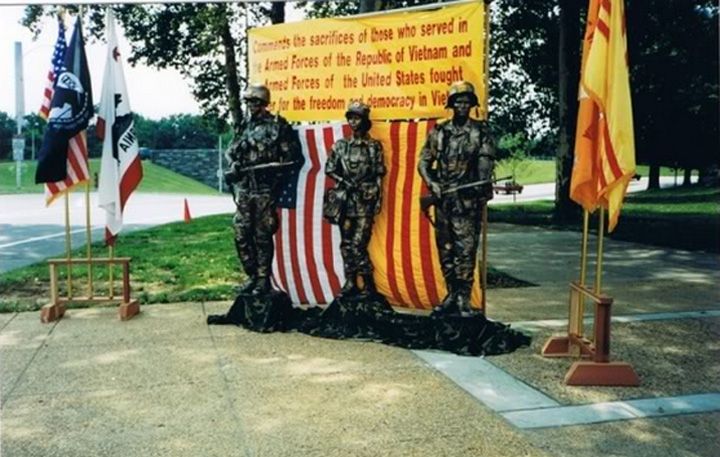
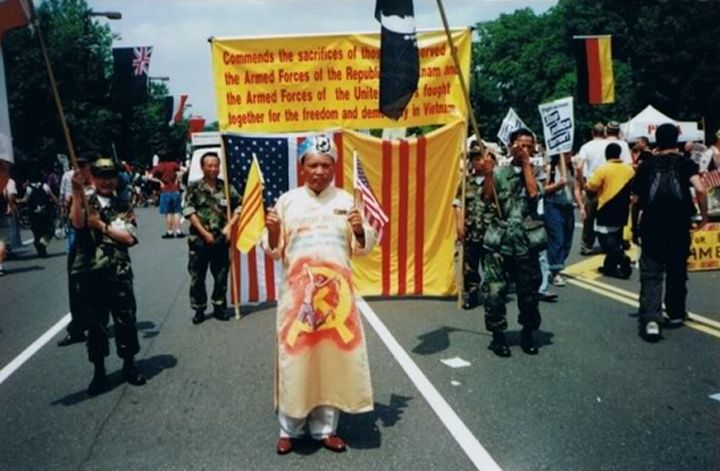
Du khách
chụp hình lưu niệm tại Philadelphia, Pennsylvania
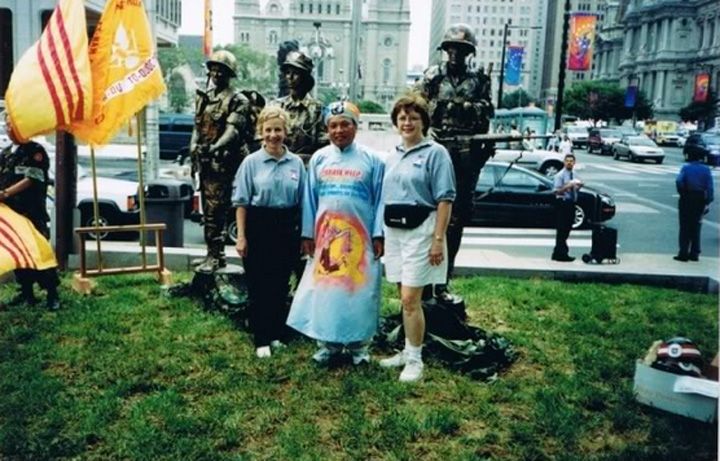
Đài
truyền hình nổi tiếng Hoa Kỳ FOX NEWS quay phim, phỏng vấn Ngô Kỷ tại
Philadelphia, Pennsylvania


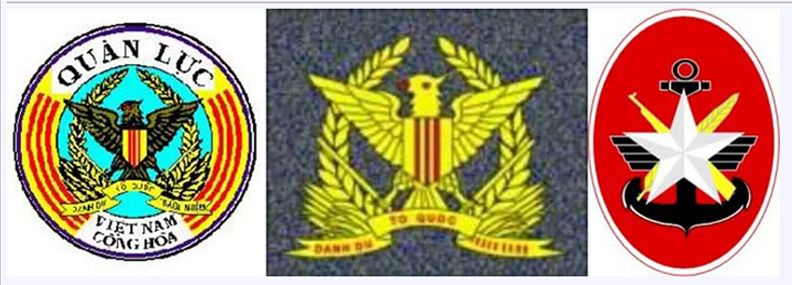
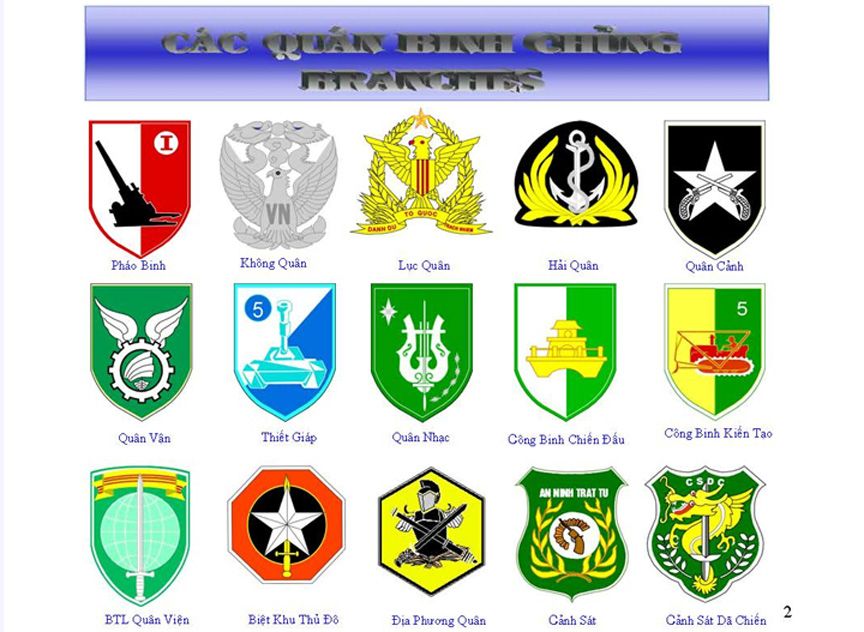

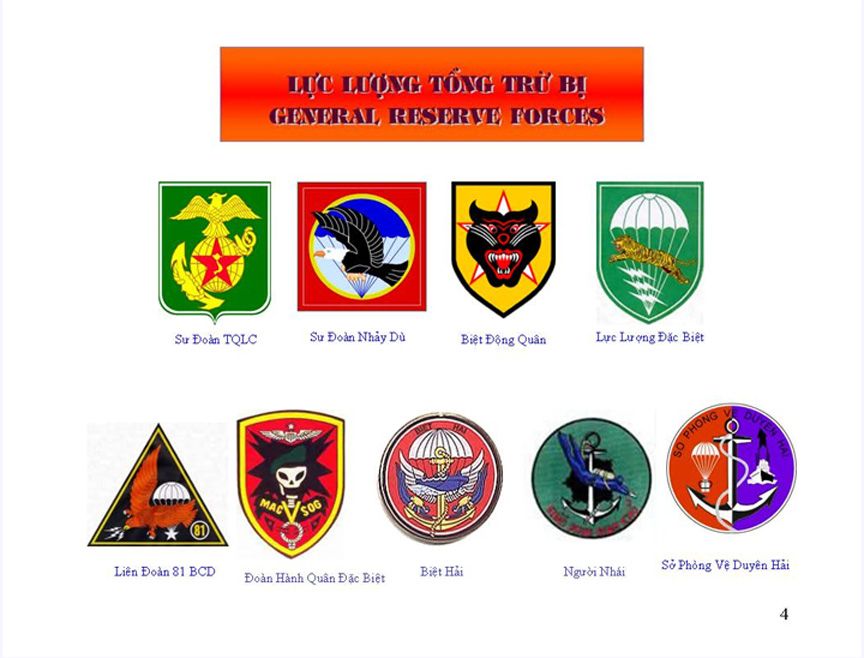
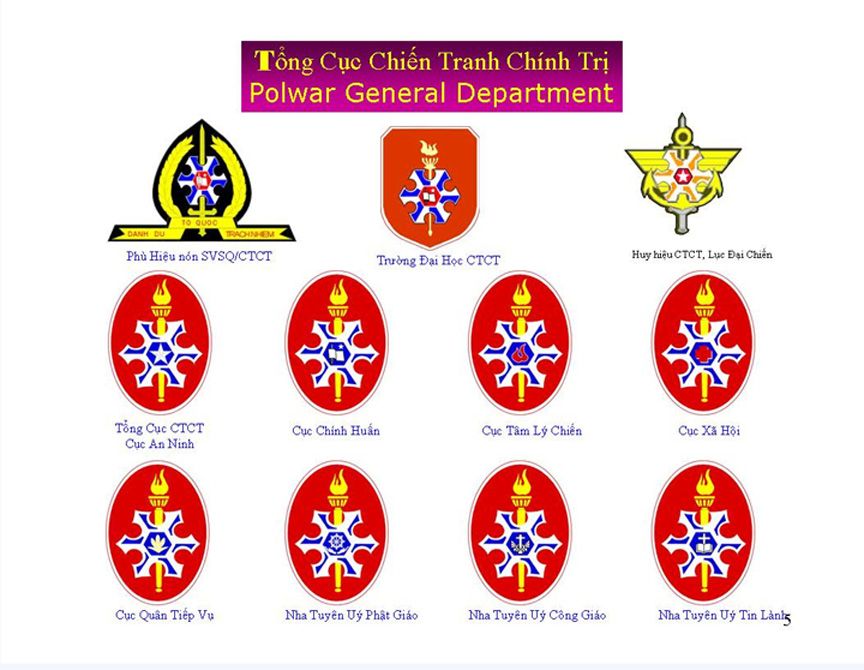



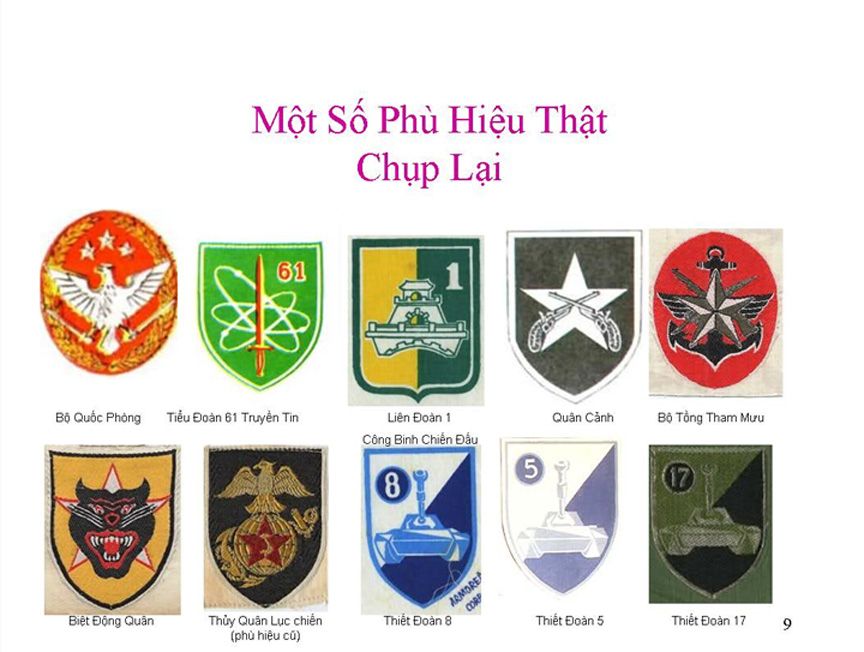
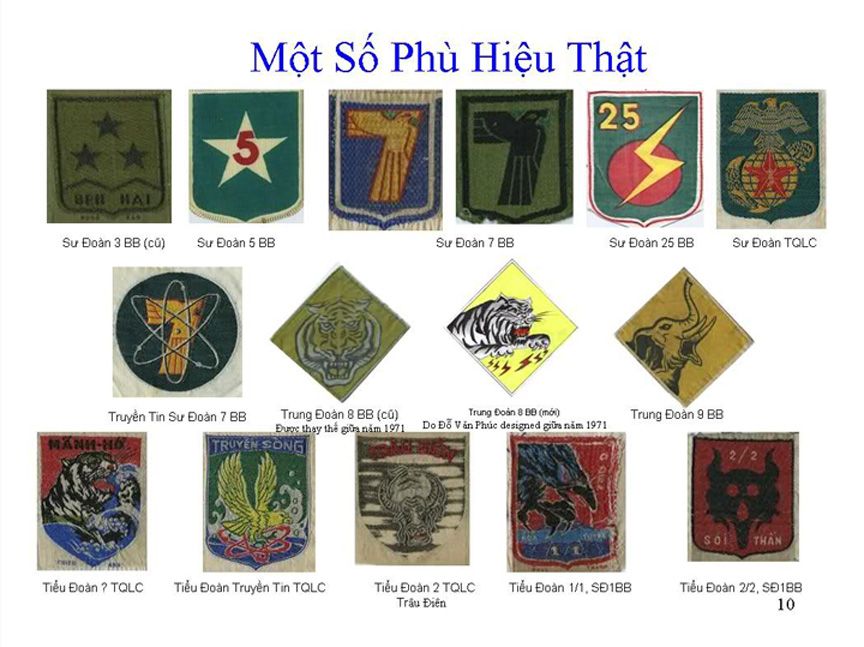
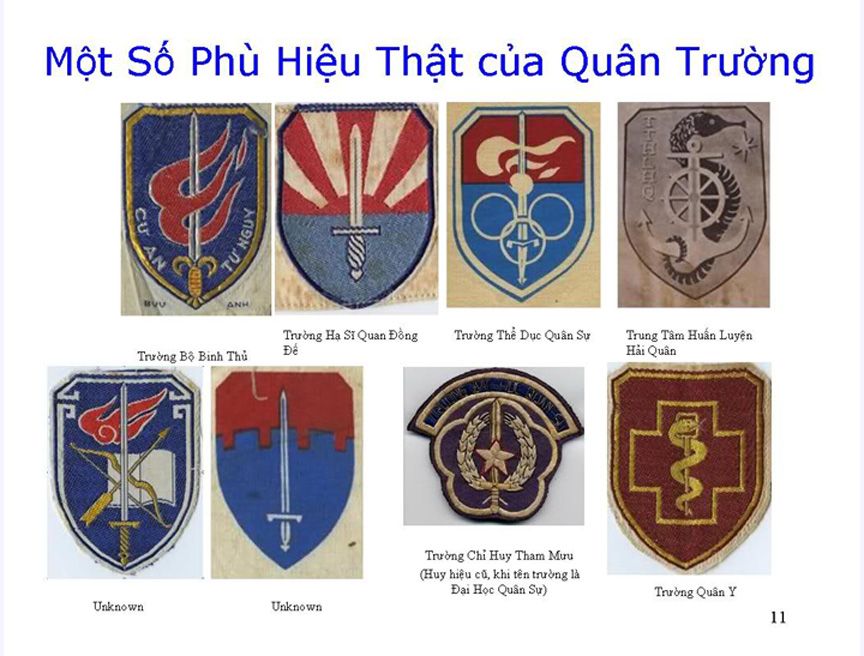
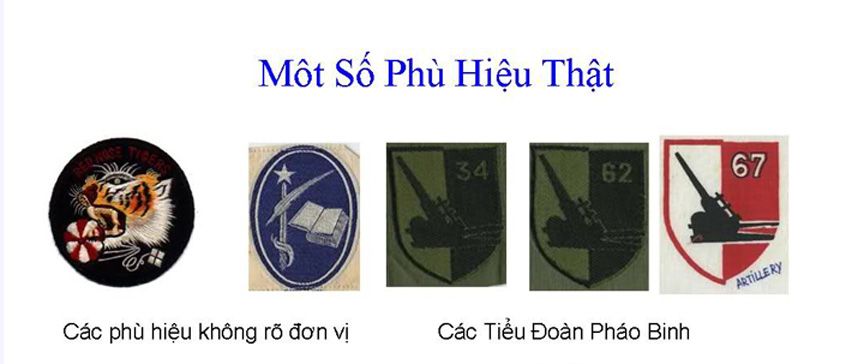

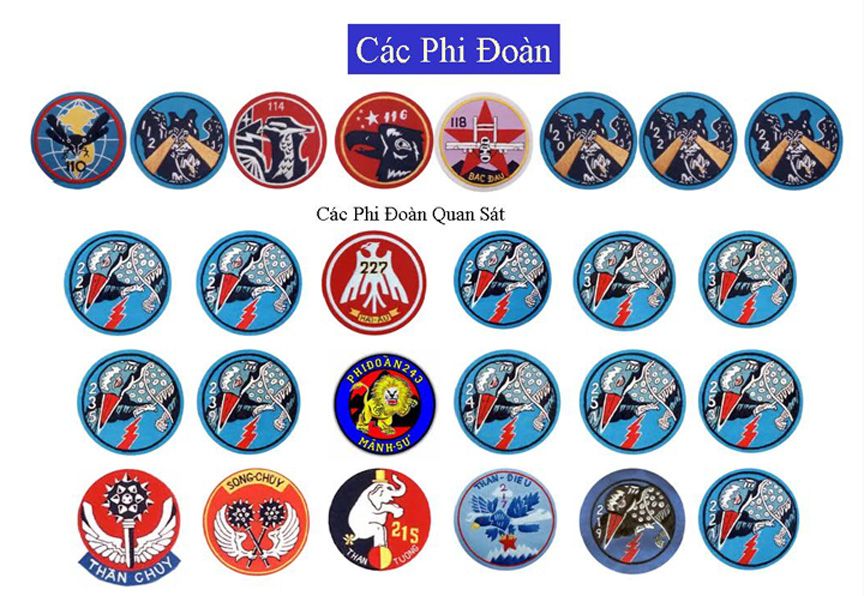
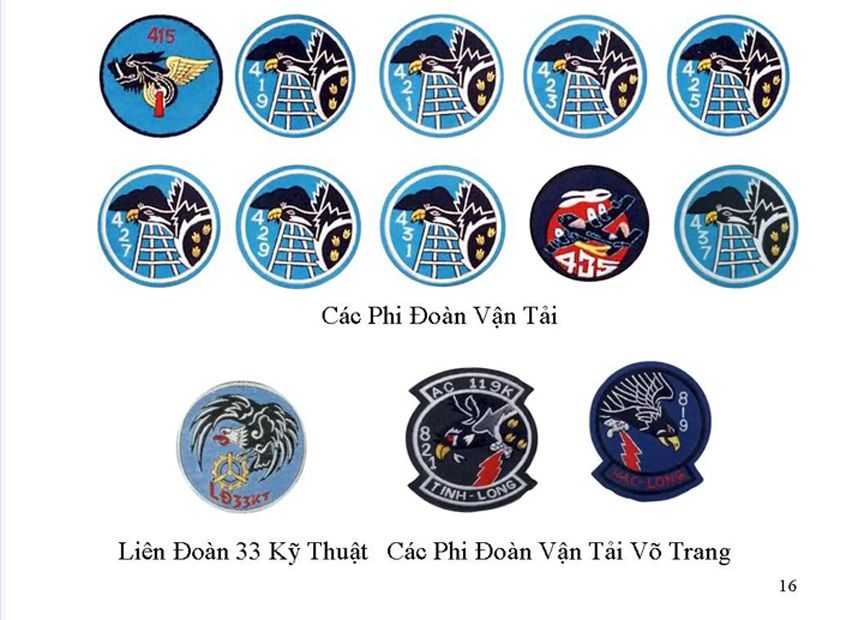
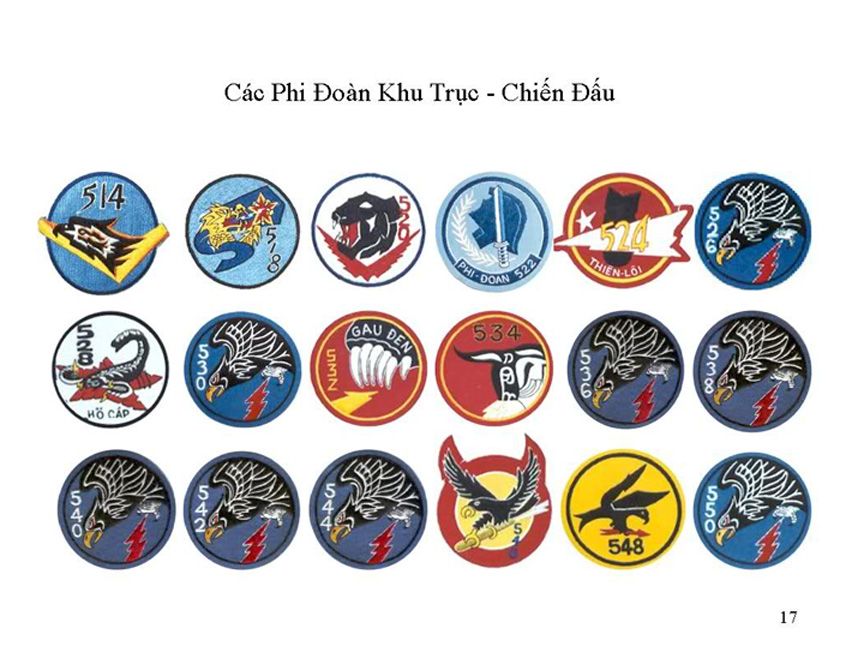
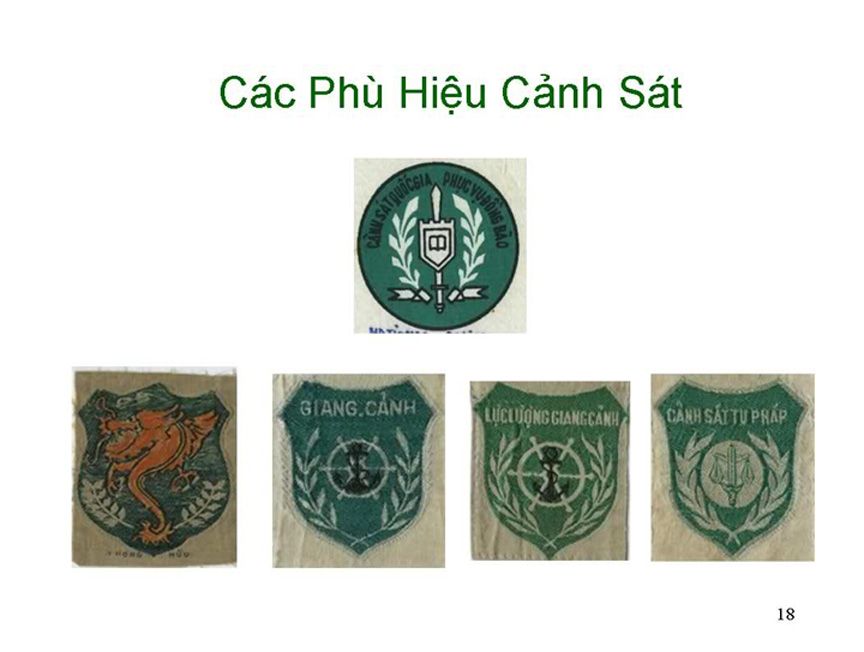
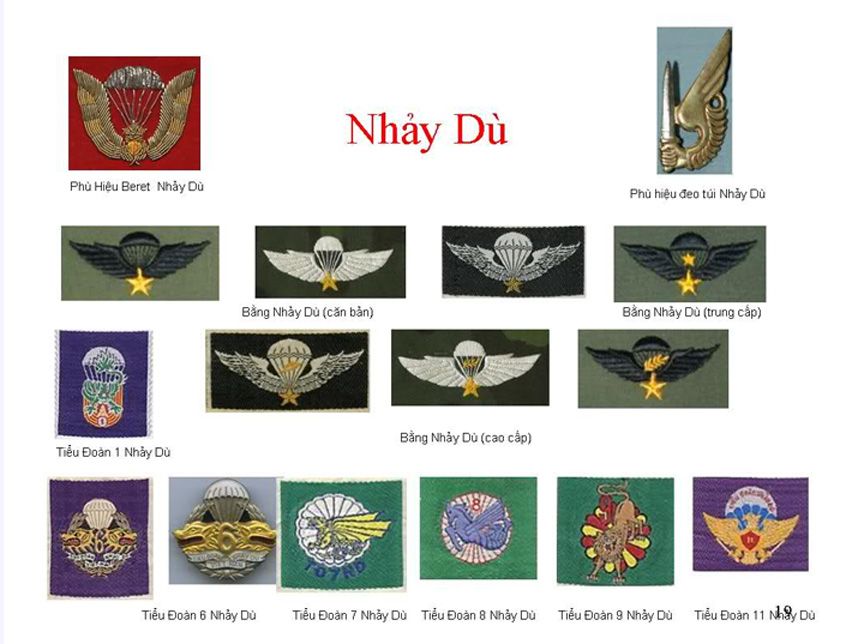
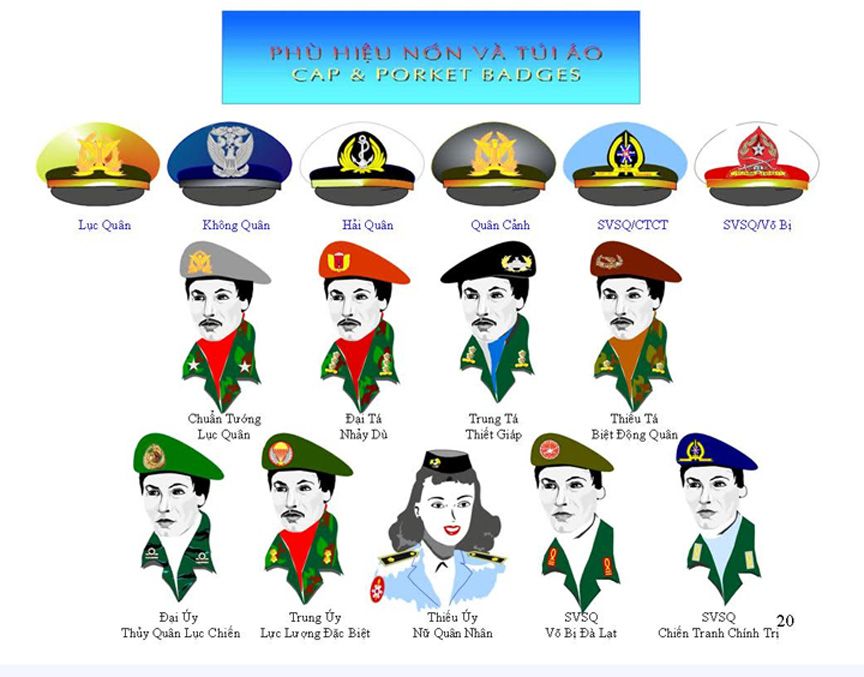
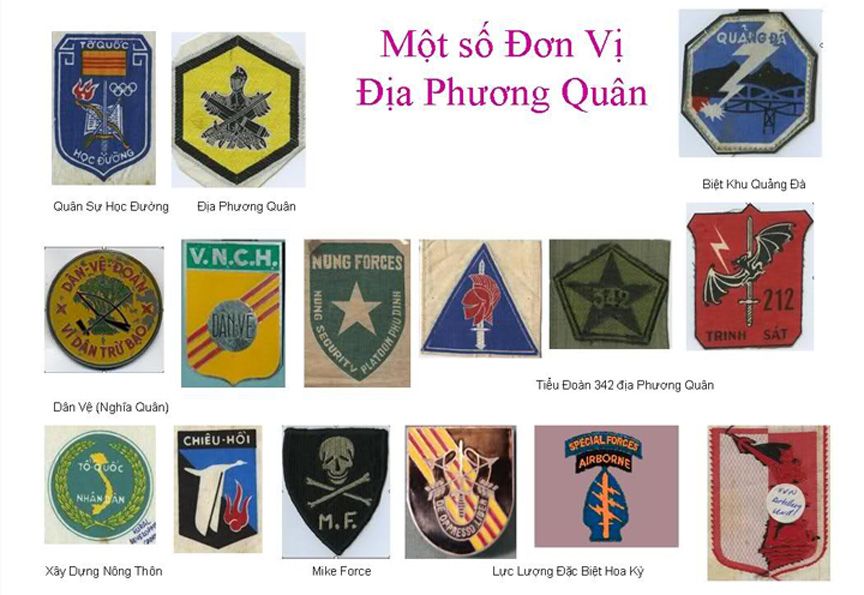

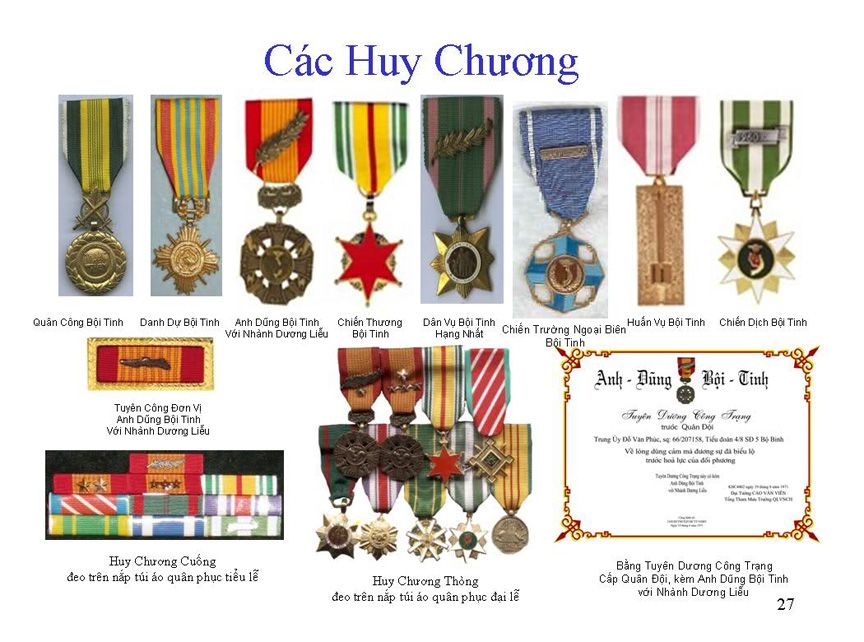
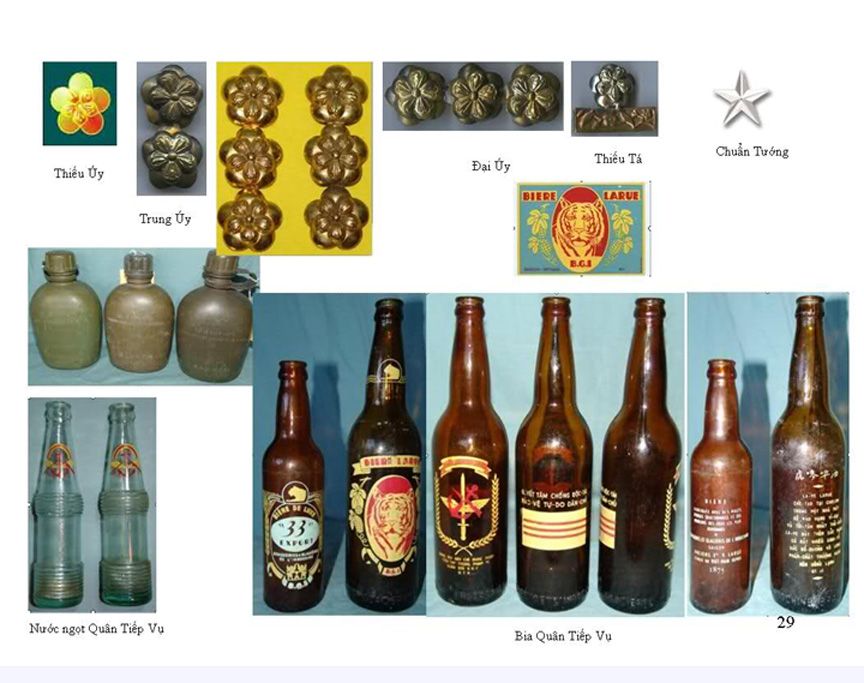
|
Chú thích các hình
dưới:
Vào năm
2000 Ngô Kỷ và quý anh Cựu Quân Nhân Việt Nam Cộng Hòa lái xe hơi đi vòng quanh
nước Mỹ từ California tới Hoa Thịnh Đốn, xuyên qua nhiều tiểu bang, mang theo 3
bức tượng Chiến
Sĩ Việt Nam Cộng Hòa, Hoa Kỳ và Nữ Cứu Thương do Ngô Kỷ thực hiện một cách gọn
nhẹ, được trưng
bày tại các nơi đông người, quan trọng khắp tiểu bang lớn như California, New
York, Chicago, Philadelphia, Hoa Thịnh Đốn, trước Tòa Bạch Ốc v.v…nhằm vinh
danh sự chiến đấu anh dũng hào hùng của Quân Lực Việt Nam Cộng Hòa và Đồng Minh
Hoa Kỳ trong công cuộc chiến đấu chống cộng sản bảo vệ tự do cho miền Nam Việt
Nam trước 1975.
Sự
đóng góp nho nhỏ này của Ngô Kỷ giúp cho nhân dân Mỹ hiểu rõ về sự thật cuộc
chiến chính nghĩa của VNCH, và nhận thức rõ thêm về sự chiến đấu cao cả của các
Chiến Sĩ Quân Lực Việt Nam Cộng Hòa.
  
San Jose, Bắc California

Ngô Kỷ chở 3 bức tượng này đi vòng quanh nước Mỹ.
Hình chụp tại Philadelphia, Pennsylvania
 
Du khách
chụp hình lưu niệm tại Philadelphia, Pennsylvania

Đài
truyền hình nổi tiếng Hoa Kỳ FOX NEWS quay phim, phỏng vấn Ngô Kỷ tại
Philadelphia, Pennsylvania
                         |

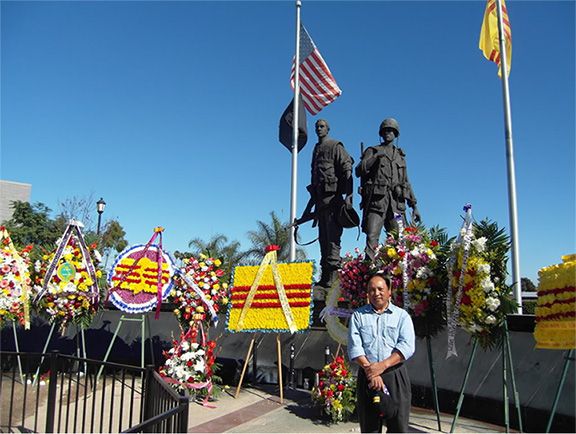
Không có nhận xét nào:
Đăng nhận xét